
We’ve got new bikes coming into stock every day at WHEELBASE, here’s just a selection of some of our latest arrivals from the World’s best brands…

Officially launched today (although it’s been hiding in plain sight for some time), introducing the all-new Trek Checkpoint. Already a popular model within the Trek range the new 2022 version of the Checkpoint is here and boasts a number of significant changes to the previous model. The new Checkpoint is available in three different guises, with each featuring a different chassis at the heart of the bike. At the top of the range there’s the Checkpoint SLR made from Trek 700 Series OCLV carbon fibre, the Checkpoint SL is also made from carbon but utilises Trek’s 500 Series OCLV frame material while the Checkpoint ALR is made from Trek’s Alpha 300 series aluminium.

The Checkpoint SL5 sits in the middle of the new Checkpoint range and features Trek’s all-new SL frameset.
Quickly cast an eye over the carbon SLR and SL Checkpoints and you’ll immediately notice some big changes to the previous version. First off there’s a redesigned front-end that takes a lot of its inspiration from Trek’s lightweight and aerodynamic road-going model the Emonda; yes, that’s right the new Checkpoint is now more aero. Trek are not the first to go down the aero-gravel path as part of product development and their reasons are simple – as riders continue to push the boundaries of gravel racing and we see speeds increasing it’s fair to say that every little aero detail and their potential benefits are quickly multiplied over the type of longer distances we’re now seeing in the most challenging gravel events. Part of this new configuration around the headtube also sees the bike’s cables and brake hoses being run internally from the handlebar directly into the frame and fork, further increasing the Checkpoint’s aero-efficiency, prolonging the life of the cables and, not least, helping to make the new Checkpoint look extra-hot!

Borrowed from their Emonda road bike the Checkpoint SLR and SL models feature an all-new aero headtube with integrated cables.
So while the 2022 Checkpoint looks a little more slick and aero than its predecessor these new looks are not at the expense of the comfort and durability required over long off-road distances; the Checkpoint SLR and SL are also equipped with Trek’s top-tube IsoSpeed decoupler which allows for a certain amount of flex and forgiveness at the junction between the seat tube and the rest of the frame. Some clever carbon fibre layup in the construction of the frame means that this portion of the chassis flexes vertically to take the sting out of the trail when you’re in the saddle while remaining laterally stiff for a super-responsive frame when you put the power down to sprint out of the saddle.
In the relatively short period of time that gravel bikes have been around it’s been interesting to already see the discipline beginning to diversify into separate sub-genres; there’s the no-nonsense utilitarian machines designed to be rugged work horses, dedicated bikepacking rigs spec’d to carry you and a considerable amount of luggage over vast differences and there’s even more MTB-orientated gravel bikes with dramatically relaxed angles and fatter 650b tyres. Both the Checkpoint SLR and the Checkpoint SL have their sights firmly set on high-performance gravel riding and racing events.
To meet these demands the SLR model not only boasts a slightly lighter 700 Series OCLV frame than the SL version it also features less mounts than its siblings staying fast, light and firmly focused on performance. There’s still some versatility here though with the SLR frame featuring mounts for mudguards, a top tube pack and frame bag. In contrast the SL frame includes extra mounts for accessories, mudguards, top tube packs, frame bags and front and rear racks.

There’s plenty of carrying options on all of the new Checkpoint models so you can prep your bike to perfectly suit your rides.
There’s another brilliant new feature which is included on both of the carbon Checkpoint options; borrowed from some of Trek’s mountain bike models including the Fuel EX and Slash, there’s their clever in-tube storage system making it easy to carry a multitool, spare inner tubes or even a small pack-down waterproof to add a little more security and peace of mind to your rides without unnecessarily cluttering up the outside of your bike. Again this is a real plus if you’re racing high-speed gravel events where every little aero advantage is a serious consideration.

Trek’s discrete in-tube storage system is a welcome addition to the all-new Checkpoint.
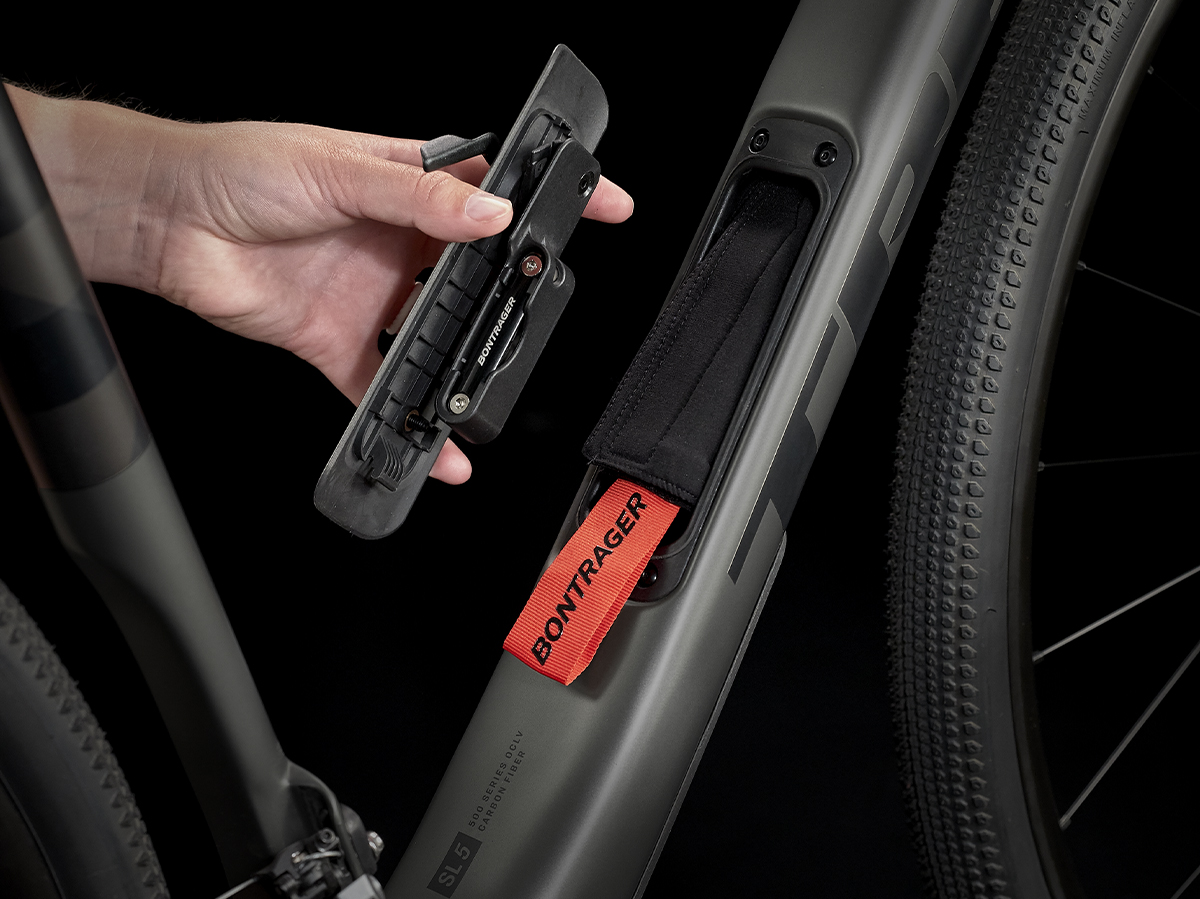
Quick and easy to access, keep your tools and spare inner tube in the frame until you need them.
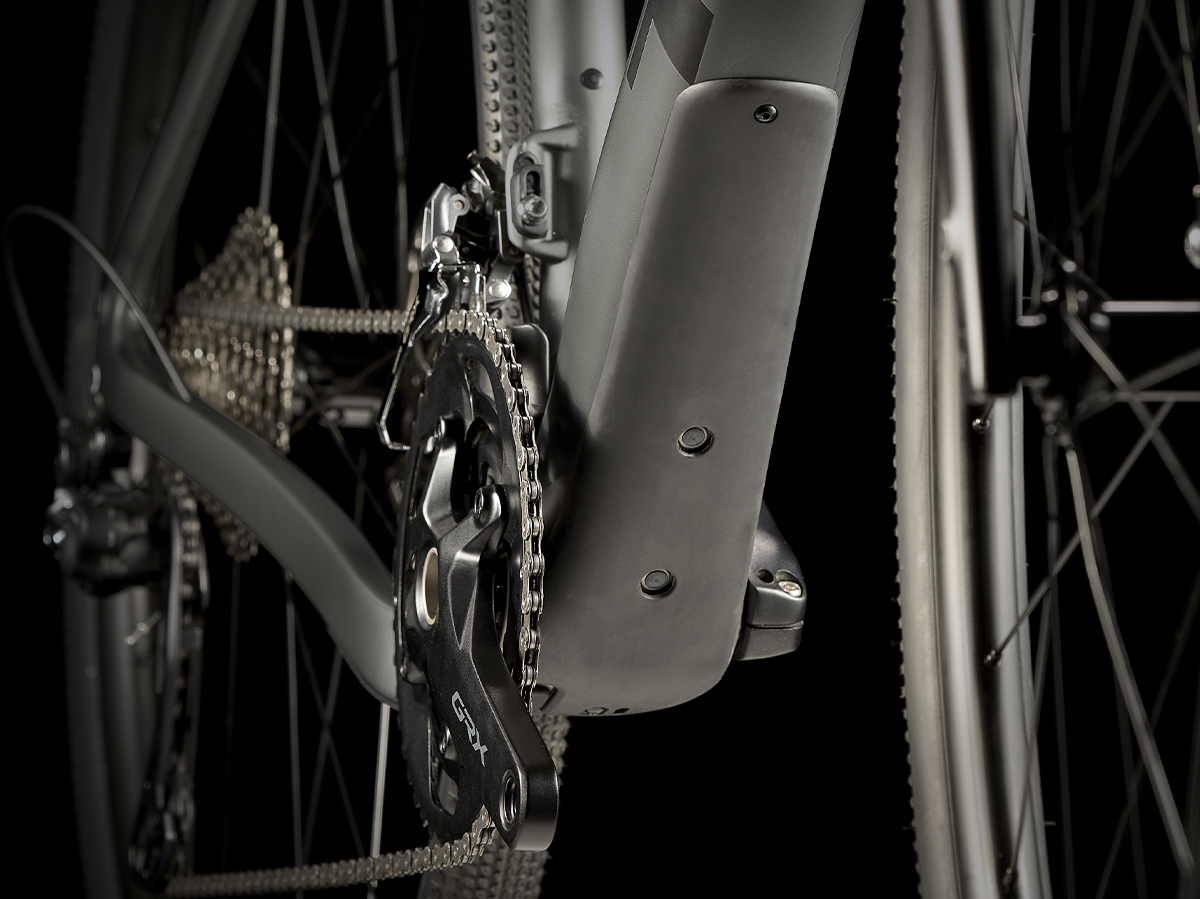
It’s a small but significant detail – downtube protection to protect the SLR and SL carbon frames from flying debris.
Tyre clearance on a gravel bike can be a deal-maker or a deal-breaker. As manufacturers have found over the past few years riders all seem to be asking different things of their gravel bikes, with people taking on more and more challenging terrain, negotiating ever-more technical off-road terrain. While there’s always the option of fitting a more narrow, faster-rolling tyre to your gravel bike when events or circumstances dictate, it isn’t always the case that your gravel bike’s frame can accommodate a wider tyre to cope with more difficult riding scenarios. Thankfully Trek have you covered with a maximum tyre width of 45mm on a 700c wheel which will enhance your comfort and control when you’re really pushing the limits off-road while that clever frame and fork configuration including a dropped chain stay on the drive side of the SLR, SL and ALR bikes helps to prevent any potential mud build up on wet off-road rides.
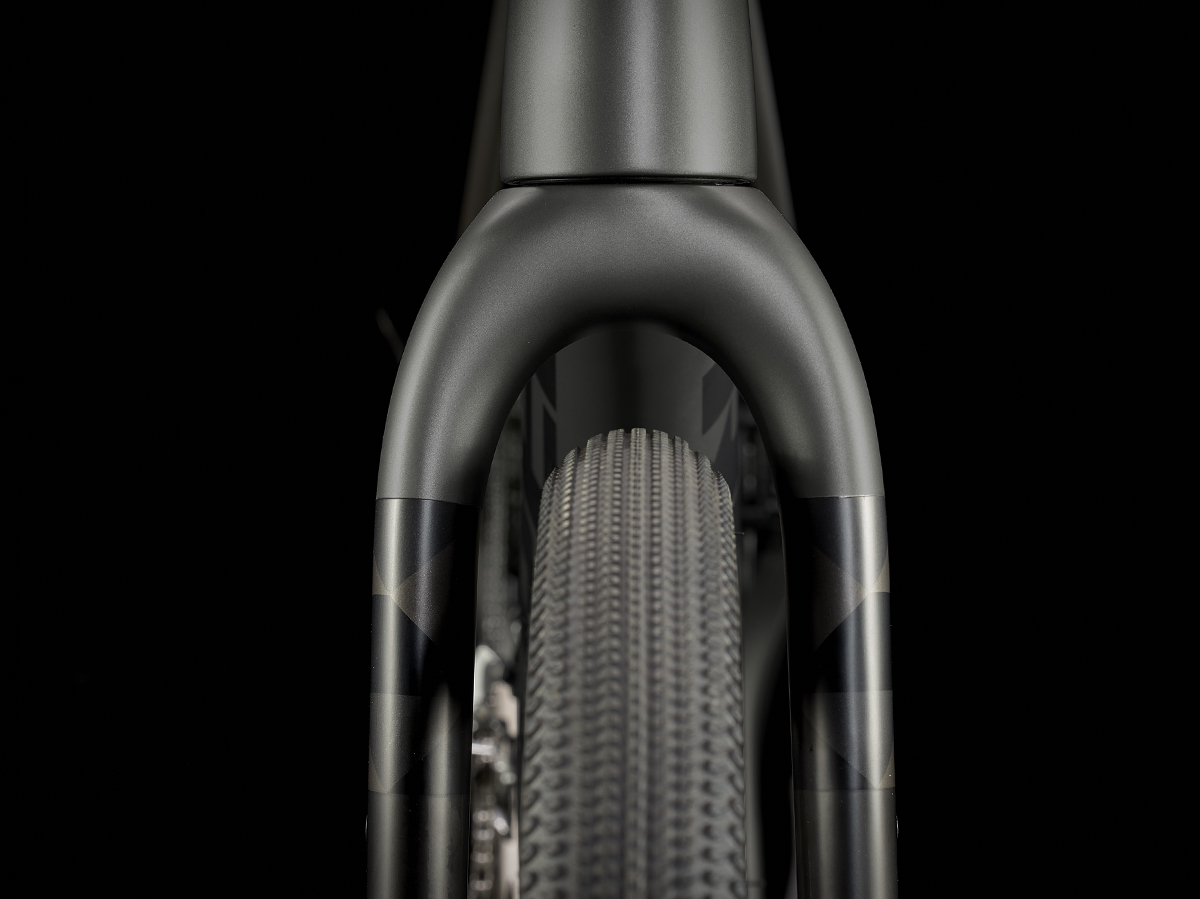
There’s plenty of tyre clearance on the all-new Checkpoint, even with 45mm tyres.

A dropped chain stay on the SLR, SL and ALR mean you can run 45mm tyres and still have plenty of clearance.
Changes to the all-new Trek Checkpoint don’t end there; all Checkpoints – SLR, SL and ALR now feature new, more progressive frame and fork geometry. There’s a longer front centre and a slacker head angle to help keep the Checkpoint stable at high speeds, but with shorter stems spec’d than on the previous version steering remains nimble and responsive, so when you do hit tight, twisty singletrack the bike feels playful and agile.
All of the new bikes in the Checkpoint range can accommodate a dropper seatpost if you prefer that setup; again depending on your chosen riding style and the terrain you mainly ride this may be something you want to do. While the Checkpoint SLR and SL models most-definitely point towards high-speed gravel events and high-performance riding where every little detail such as aerodynamics, low weight and stiffness come into play the ALR versions lean more towards being a utility-focused, do-it-all machine. The ALR, made from lightweight Trek 300 series alpha aluminium features the same carbon fork as the SLR and SL models but does not include the Isospeed decoupler or the internal cable routing through the headtube as found on the carbon options. The ALR is super-versatile and features mounts for mudguards, bikepacking bags, bottles and front & rear racks as well as clearance for tyres up to 45mm wide. If your gravel riding is a little more playful and is focused more on zipping through singletrack than slugging out mile after mile of endless gravel lanes then the Checkpoint ALR5 Driftless is worth a look; included in the spec is an Easton EA70 AX dropper seatpost allowing you to get the saddle out of the way quickly when you are negotiating steep, technical descents.
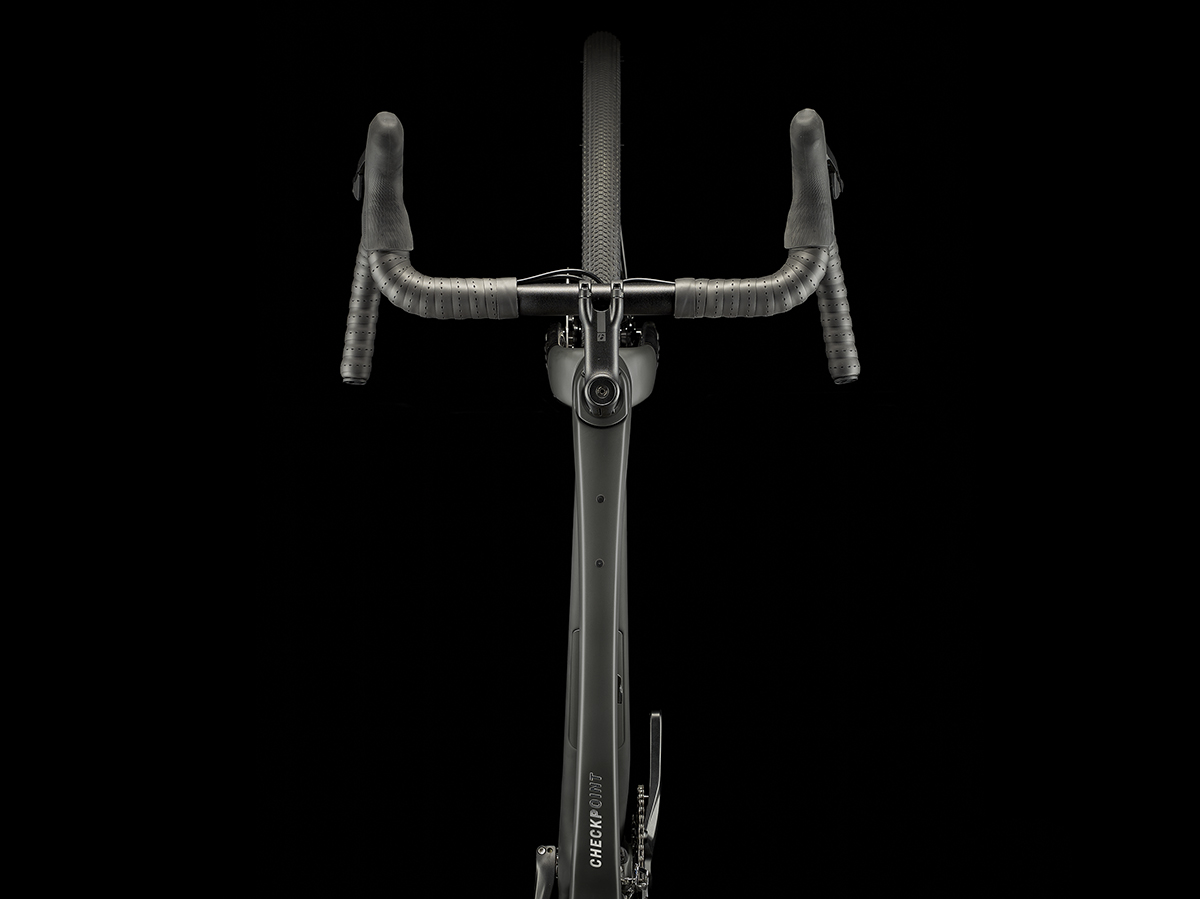
All-new frame and fork geometry means more stability at speed, while a shorter stem helps to keep the Checkpoint agile on technical singletrack.
Launched today, the all-new Checkpoint is spread across a wide range of specifications and price points; we’ve put together a quick-look guide below showing each model, from the top-of-the-range Checkpoint SLR9 eTap featuring a 700 Series OCLV carbon Isospeed frame, a Sram Red XPLR eTap AXS groupset with Bontrager Aeolus RSL 37 OCLV carbon wheelset, through to the Checkpoint ALR5 featuring Trek’s lightweight 300 Series Alpha Aluminium frame, Checkpoint carbon fork and a gravel-specific Shimano GRX RX600 groupset.
Checkpoint SL7 eTap (bikepacking luggage not included)
Checkpoint SL6 eTap (bikepacking luggage not included)
Checkpoint SL5 (bikepacking luggage not included)

Checkpoint ALR Driftless (CAD illustration, product photo to follow)
Written by Johnny Dodgin
Have you seen our weekly Fast Bike Friday feature? Missed some of our best bikes? You can now see all of our featured bikes in one place over on Pinterest where you’ll find links to each of our Fast Bike Friday Blogs too!
Click the link below and search our archive…
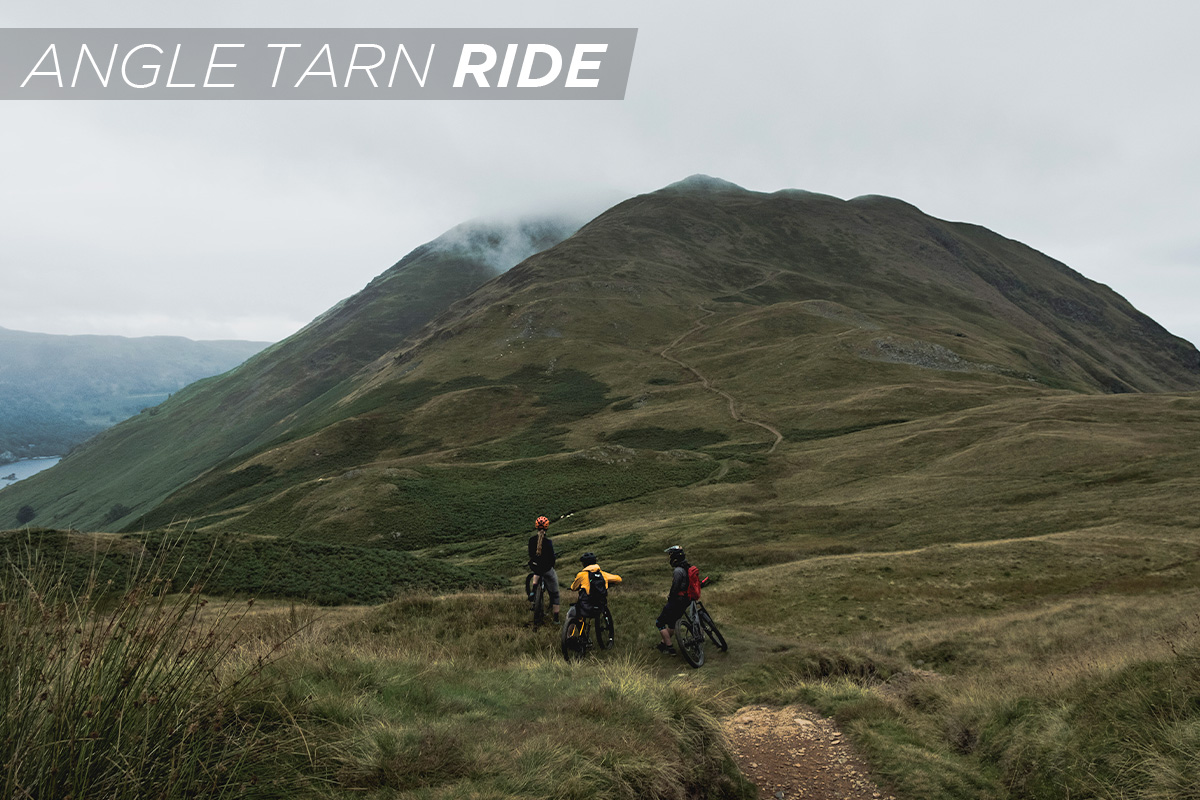
OK, we all know the clichés quoted on social media: ‘find your dream job’, ‘love what you do and it never feels like work’, ‘live the dream, don’t dream the life’ and so on. The reality of working in the cycle industry is somewhat different once you get into the daily grind and even if you’re working in and around the very activity you love it’s the little things that start to grind your gears (excuse the pun). So many of us are drawn to the bike trade because of our passion for cycling and the to be part of the wider riding community, but we’re just like anybody else, it’s very easy to start slipping into bad habits and to skip opportunities to ride with your mates.
Here at Wheelbase Lake District we are incredibly blessed to have some of the very best UK mountain bike trails on our doorstep; so when we turn the lock and the shutters come down we do everything we can to encourage each other to down tools and ride, even if that means making the most of wet early Autumn evenings when the last of the sunlight all but plummets out of the sky. As long as these riding opportunities continue to come along and as long as we keep the stoke high within the team then we can legitimately say we are pretty close to ‘the dream job’.
Our resident landscape photographer and friendly Wheelbase staffer Andrew Barlow rounded up a small group of colleagues one evening after work and headed up to Angle Tarn, Patterdale in the Lake District, making the most of a damp but warm evening where low cloud and mist constantly shifted throughout the dramatic landscape.
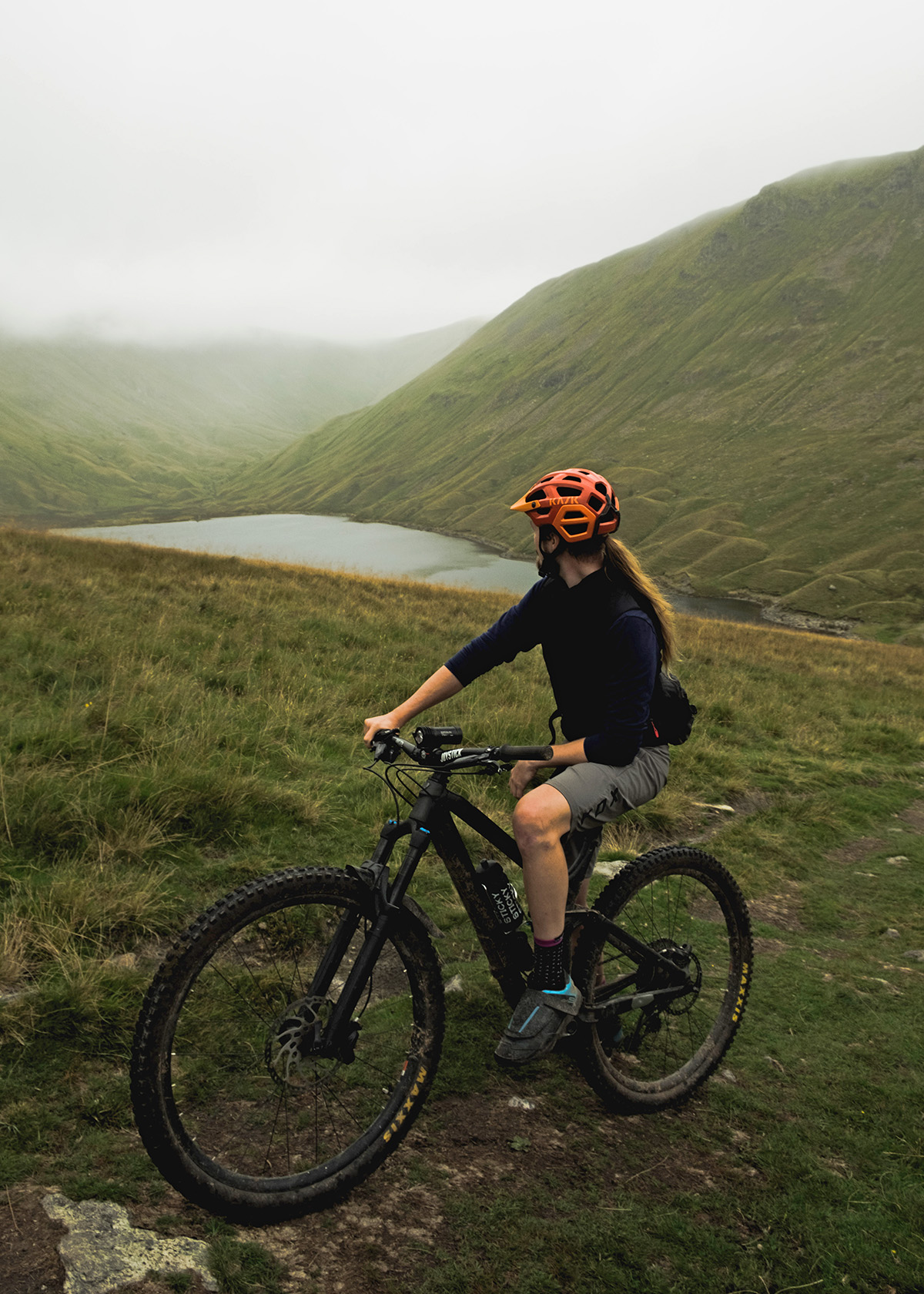
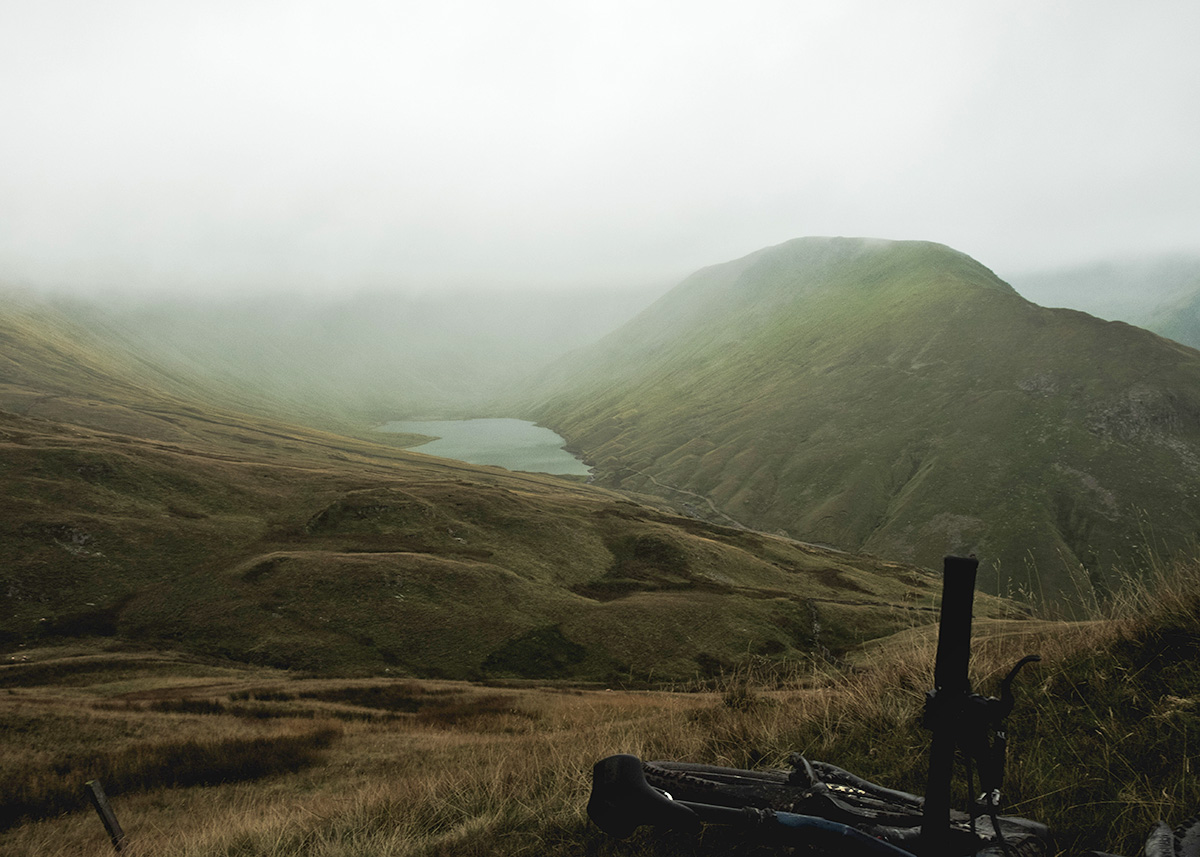
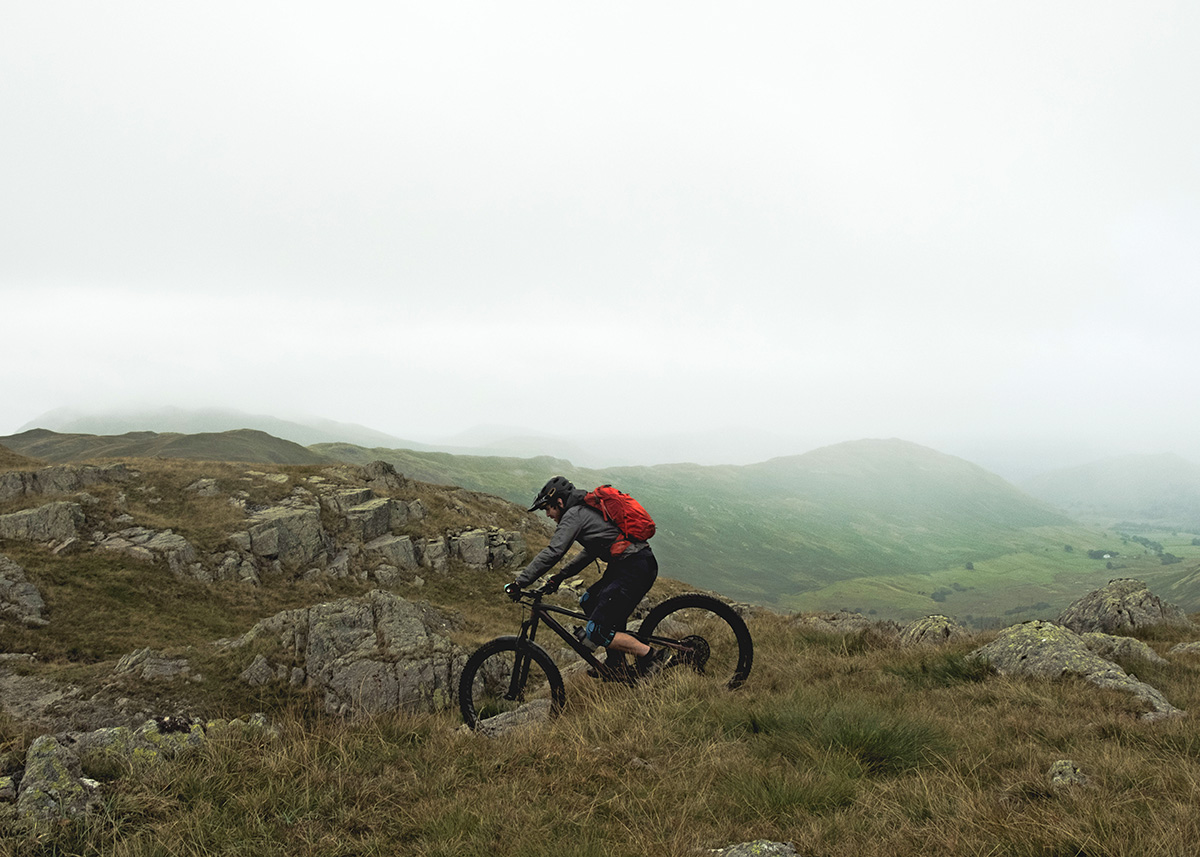

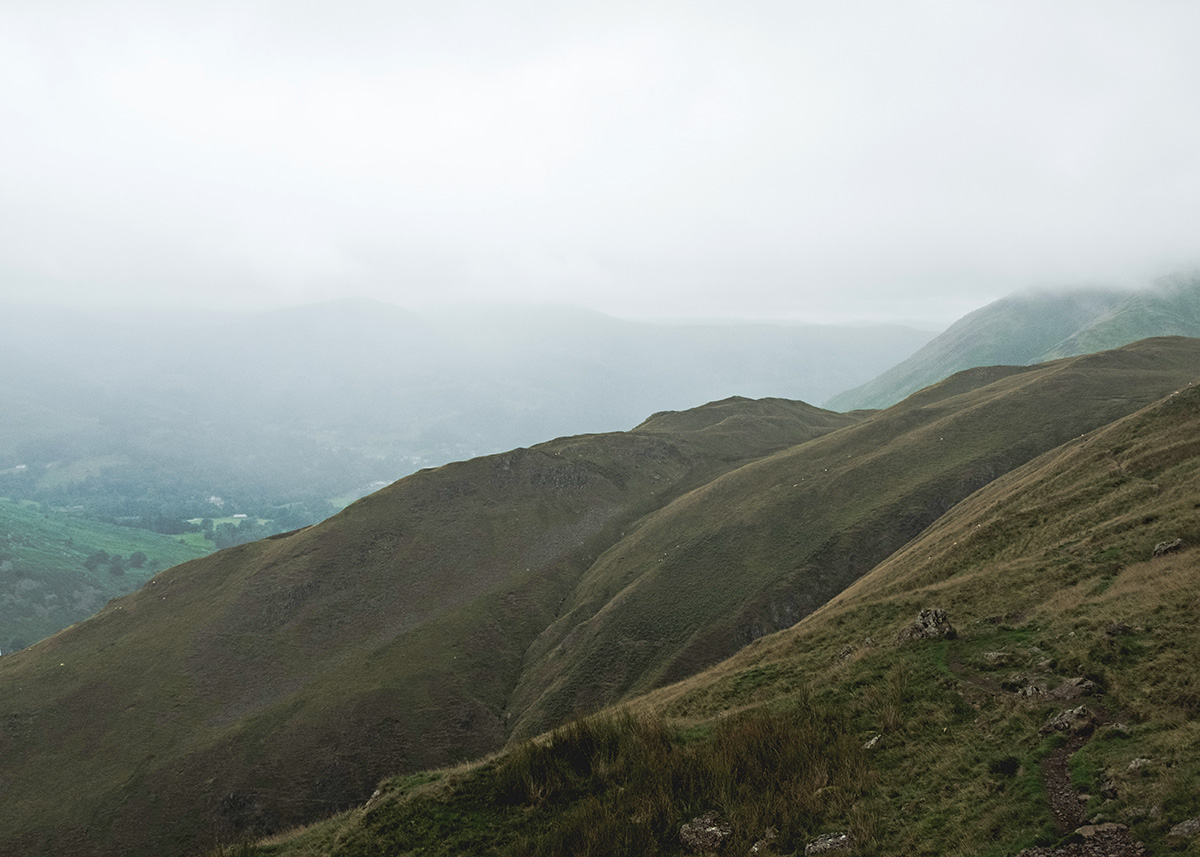
All photos by Andrew Barlow
Have you seen our weekly Fast Bike Friday feature? You can see new fast bikes every Friday. Missed some of our best bikes? You can now see all of our featured bikes in one place over on Pinterest where you’ll find links to each of our Fast Bike Friday Blogs too!
Click the link below and search our archive…

Launched today! Introducing the all-new Cervelo R5, a superlight climbing bike that also cuts through the air with guaranteed aero-efficiency and handles like a dream. If you’re a fan of professional road racing and watched this year’s Tour De France or Vuelta A Espana you may well have spotted that the Jumbo Visma team were onboard the all-new R5 back then; there’s been plenty of industry chat on this bike and it was very much Cervelo’s ‘open secret’ before today with La Vuelta’s overall winner Primoz Roglic even taking a special edition all-red R5 onto the podium at the conclusion of this year’s final grand tour.

Race fans may well have already spotted the all-new Cervelo R5 in action.
The new 2022 version of the Cervelo R5 features a mix of significant improvements and subtle refinements over the previous version. The new R5 frame is now 130 grams lighter which Cervelo state is a 16% reduction in weight from what was already a super light frame. Total weight for the new R5 frameset is just over 1 kilogram, with the frame weighing 703 grams and the fork weighing 329 grams. The fully-integrated cockpit which routes all cables and brake hoses through the handlebar, stem, headset, frame and fork also features parts which boast further weight loss; handlebar and stem are both 12 grams lighter and the R5’s carbon seatpost is also 20 grams lighter.

The new Cervelo R5 has shed even more weight than its feather-weight predecessor.
While the Cervelo R5 is most definitely not being marketed as an all-singing all-dancing aero road bike there’s certainly some refinement when it comes to tube profiling and component integration. With all the knowledge that they gained from the design and development of their S5 and P5 bikes the Cervelo engineers have created a carbon chassis that cuts through the air more efficiently and saves watts in the real world not just in the wind tunnel.
So what type of road riding and racing is the Cervelo R5 aimed at? Well, the way the bike has been ridden in competition so far is an obvious clue to how Cervelo see the R5 being utilised by the wider public. Already a race winner in the mountains of France and Spain this year, the R5 is designed to get to the top fast with this feather-light road bike exceling on long, steep climbs. The previous version of the R5 was already famed for its climbing prowess and while this factor has been further refined here, the Cervelo designers have also spent a lot of time and energy on enhancing the ride quality of the R5 on the downhills too, creating a machine that carves the turns and instils new levels of confidence in your bike handling.

A fully integrated cockpit means more aero efficiency over longer distances.
Cervelo have really made the most of their working partnership with the Jumbo Visma pro cycling team, taking almost endless amounts of feedback from both the riders and staff within the team. The previous version of the R5 had been flagged by some racers as being almost too stiff, stating that while it climbed beautifully, a long day in the saddle could get a little uncomfortable, particularly as the multiple stages of a mountainous Grand Tour began to take their effect. With this clear bit of feedback the Cervelo designers and engineers set themselves a new brief for the all-new R5 – find the sweet spot between having the right amount of stiffness for responsive, efficient climbing and enhanced comfort in the saddle.
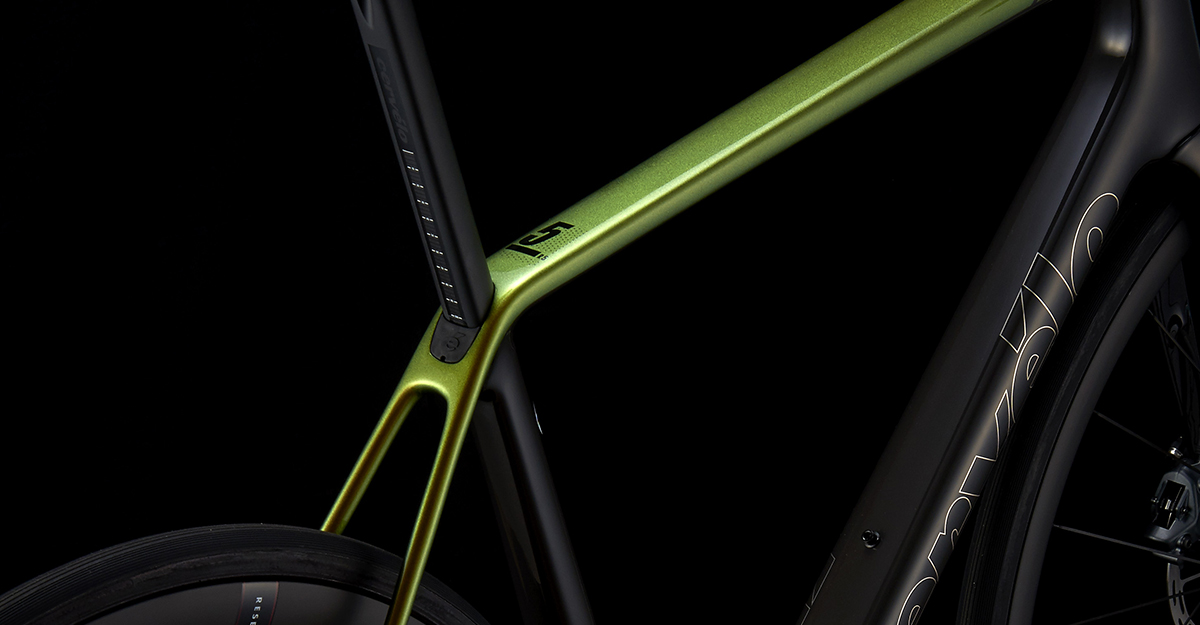
The brief was clear, make the new R5 even more comfortable WITHOUT compromising on efficiency.
Cervelo worked on various carbon layups to help strike that balance and sent them over to Team Jumbo-Visma for testing. Tom Dumoulin, the Dutch cycling superstar was an ideal candidate to offer valuable feedback having ridden the previous Cervelo R5 bike at Team Sunweb before he joined Jumbo Visma. His feedback was particularly positive – the new R5 climbed just as efficiently but that added compliance and meant he would finish his training rides and races less fatigued. That was all Cervelo needed to hear and the all-new R5’s frameset was signed-off.

Research and development work with the Jumbo Visma pro cycling team has paid off with a noticeably more comfortable ride.
With that fully integrated cockpit, slightly more compact frame with more compliant seat stays, powerful hydraulic disc brakes, cutting-edge electronic groupsets (with options from SRAM or Shimano) and an increase to tyre clearance allowing you to run tyres up to 34mm wide the all-new 2022 Cervélo R5 ticks all the boxes on the check list that we’ve all very quickly come to expect from a modern road racing bike. The fact that the new R5 is already race proven at the highest levels of competition before its official launch should tell you all you need to know.

The all-new Cervelo R5 2022 has already taken overall victory in the Vuelta A Espana.

2022 Cervelo R5 Red eTap AXS £11,699.00
Full Specification:

2022 Cervelo R5 Force eTap AXS £8,599.00
Full Specification:

2022 Cervelo R5 Dura Ace Di2 £11,699.00
Full Specification:

2022 Cervelo R5 Ultegra Di2 £8,299.00
Full Specification:
Geometry:
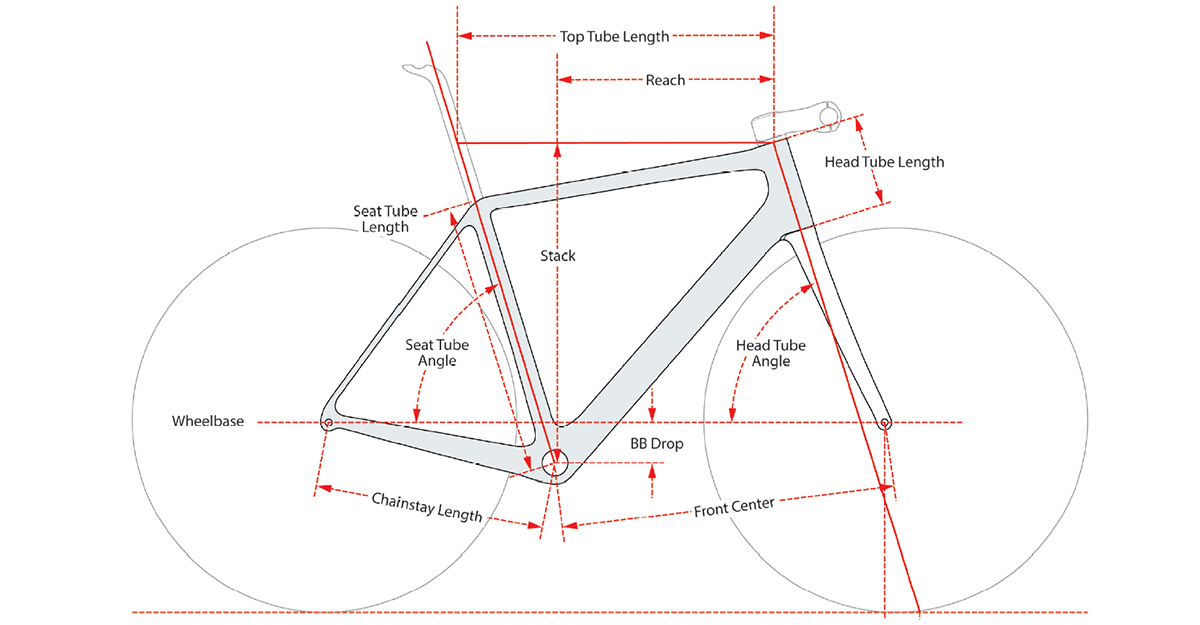

Written by Johnny Dodgin
Have you seen our weekly Fast Bike Friday feature? You can see bikes like the Pinarello Dogma and more every Friday. Missed some of our best bikes? You can now see all of our featured bikes in one place over on Pinterest where you’ll find links to each of our Fast Bike Friday Blogs too!
Click the link below and search our archive…

A HUGE Chapeau! To our man Finn Crockett of the Wheelbase Cabtech Castelli team who has taken 3rd overall in the National Road Series AND took 1st place overall in the Under 23 category!
The series closed out on the infamous Beaumont Trophy race circuit in Northumberland with the Wheelbase Cabtech Castelli team represented by Logan Maclean, Matt Clarke and Finn Crockett with Finn placing a very respectable 18th place to back up his previous 3rd place podium position at the Lancaster GP and 10th place at Ryedale. Finn’s consistent form this season and his brilliant podium spot in the first round saw him take 3rd place overall in the National Road Series which is a fantastic result against the very best road racing cyclists in the UK.
Finn is currently continuing his education, balancing racing and his studies to great effect as proven this year. Racing against a large cohort of pro riders who only have their training and racing to consider Finn has shown that with a lot of determination and focus, tasting success against the very best can be achieved. Not only did Finn place 3rd overall, but thanks to his young age he also took 1st place overall in the Under 23 category!
Congratulations again Finn and thank you for representing Wheelbase so well!
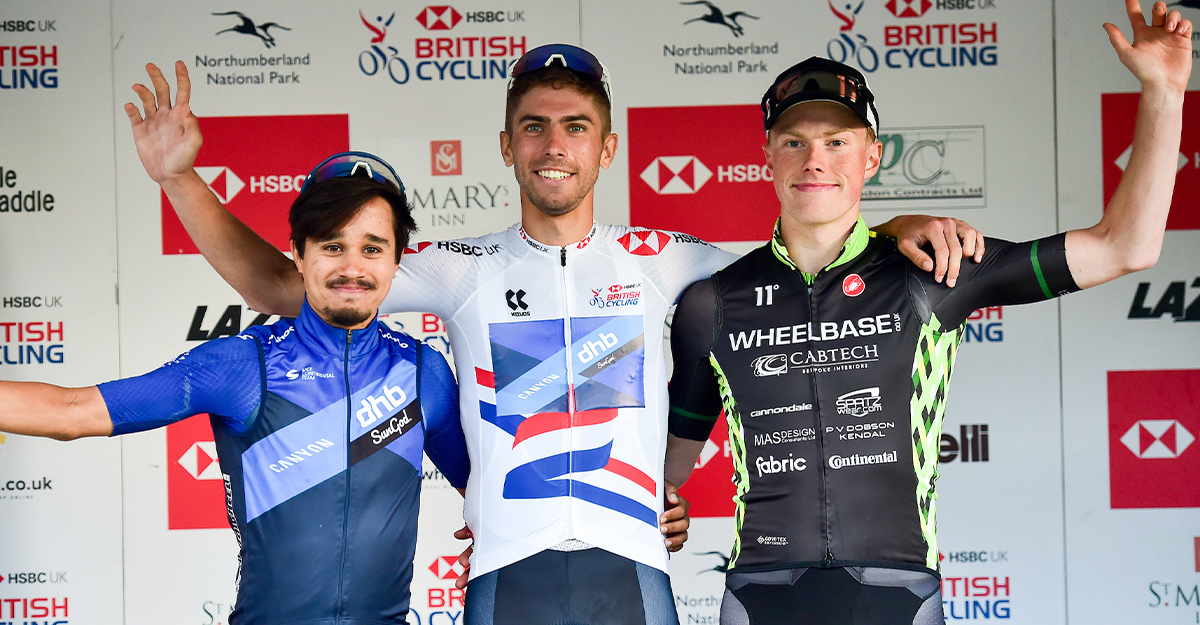
Finn Crockett (right) took 3rd place overall in the National Road Race Series.
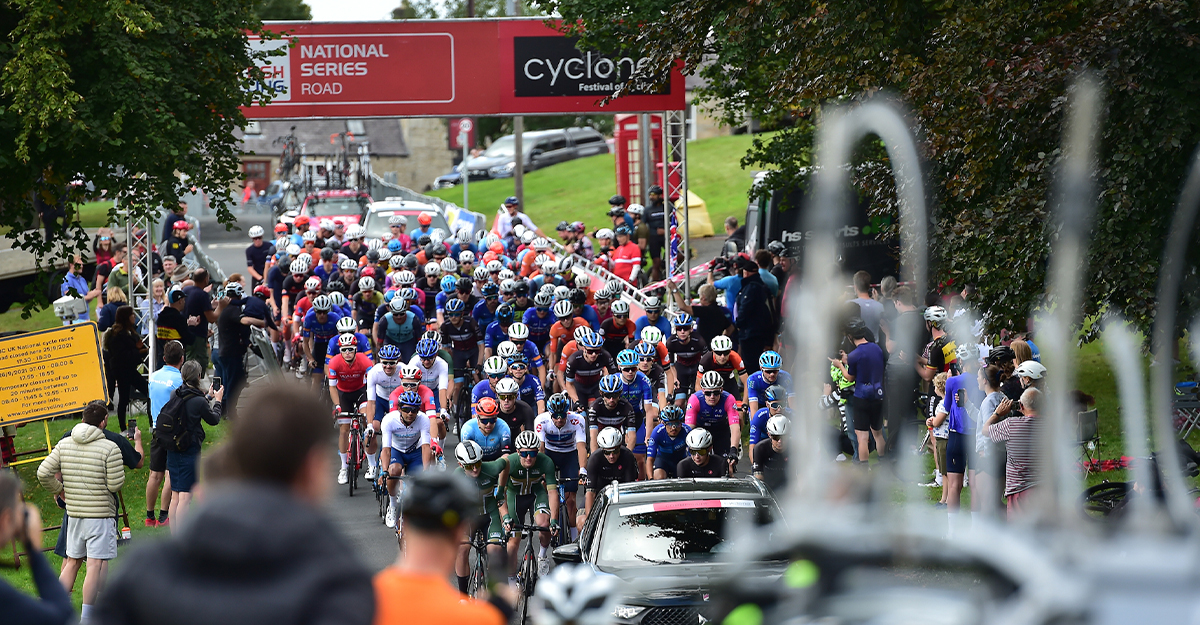
Riders roll off the Beaumont Trophy start line.
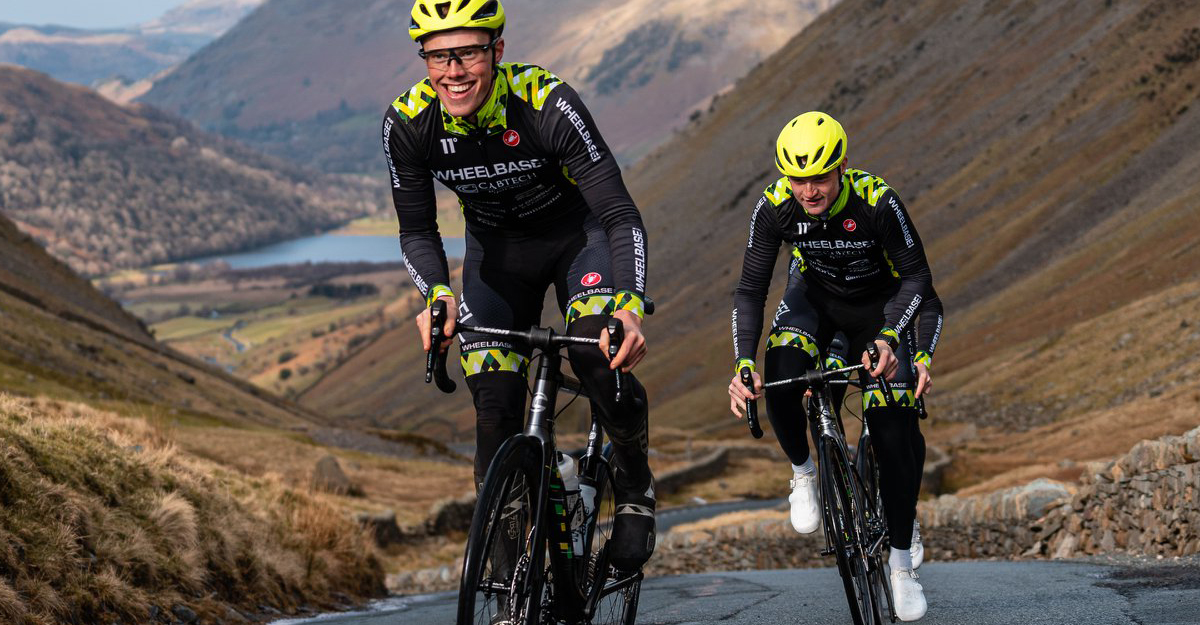
Finn Crockett (left) successfully balances racing with his studies.

Finn takes 1st place overall in the National Road Race Series Under 23 category.
Written by Johnny Dodgin
Photos by Simon Wilkinson
Have you seen our weekly Fast Bike Friday feature? You can see bikes like the Pinarello Dogma and more every Friday. Missed some of our best bikes? You can now see all of our featured bikes in one place over on Pinterest where you’ll find links to each of our Fast Bike Friday Blogs too!
Click the link below and search our archive…

This week’s Fast Bike Friday feature is firmly focused on speed and aerodynamic efficiency with the Pinarello Prince Disc Ultegra road bike in the spotlight. Available in several different guises this particular model features Shimano’s brilliantly functional 11-Speed mechanical groupset, powerful flat-mount hydraulic disc brakes and a pair superlight Mavic Ksyrium Elite UST wheels. Stunning to look at, you could be forgiven for thinking that the Pinarello Prince is primarily focused on Italian styling over functional design, however there’s some solid science behind each and every feature on this cutting-edge race bike, with Pinarello proving yet again that their most technologically advanced road bikes are able to perform at the highest level while looking amazing too.
The Pinarello Prince boasts a super-aero profile and fully integrated cockpit.
You may be familiar with the term ‘trickle down technology’ where design and manufacturing innovation filter down from models higher up in a brand’s range. Pinarello make a point of highlighting the fact that a considerable amount of the design features found on the Prince Disc have come directly from their Dogma F12 model, as used by Team Ineos within the professional road racing world. With lightweight climbing efficiency, stiffness and responsiveness on high-end road race bikes now being the expected norm, our attention has shifted to aerodynamics with this now being the number one consideration for most bike brands. So it’s no surprise to see that as well as being informed by all that rich racing heritage from the Dogma the Prince also inherits its total cable integration system, called TiCR which enables a significant aerodynamic advantage.
The Prince includes Pinarello’s TiCR design principle, featuring internal cable routing and a fully integrated cockpit.
Viewed from the front it’s easy to see just how aerodynamic the Pinarello Prince is.
As well as that aero frame, the Prince is spec’d with an aerodynamic MOST Tiger stem and headset spacers which cleverly conceal all of the cables.
Made from T700 UD Toray Carbon the Prince is responsive and instantly reacts to acceleration but also gives a magic carpet ride thanks to its high dampening quality which helps to absorb road vibration and keep you more comfortable over longer rides and races. Along with the clever use of this material Pinarello have specially profiled the seat stays to provide a higher level of compliance in this key area, further helping to negate any potential road buzz.
T700 Toray Carbon offers a magic carpet ride thanks to its clever composition.
Specially profiled seat stays are designed to provide a higher level of dampening, helping to absorb road vibration.
The Pinarello Dogma featured some really clever frame tube profiling, developed to increase power transfer through the frame in key areas; their asymmetric configuration can now be seen on the Prince too, with both the downtube and the rear seatstays moulded asymmetrically to favour a larger portion of the frame towards the right which, their research has proved, helps to deal with the extra forces put through the drive-side on the frame. This is all achieved without adding any extra aerodynamic drag.
That asymmetric rear triangle is most noticeable at the junction between the seatstay and the seat tube.
Going back to aerodynamics and the tube profiles of the Prince it’s worth noting that Pinarello have once again taken inspiration from the design and development work done on the Dogma. The main tubes of the Prince feature a profile that Pinarello call ‘Flatback Profile’ which follows exactly the same principle sometimes described as a ‘Kamm-tail’ or ‘truncated aerofoil’; the principle is that a shape with a forward-facing rounded front combined with a flattened-off profile on the rear-facing portion is more efficient at cutting through the air. The Pinarello designers didn’t stop there though; again, with lessons learned from the development of the Dogma, Pinarello have used a concave profile on the inward-facing lower portion of the downtube to enhance the Prince’s aero-efficiency when two bottle cages and water bottles are fitted – another great real world consideration from Pinarello.
The Pinarello Prince downtube features a concave profile, helping to make the frame more aerodynamic when a water bottle and cage is fitted.
The Pinarello Prince Disc Ultegra is fitted with 25mm tyres but easily accommodates 28mm if you prefer.
That aero-efficient concave downtube is also slightly asymmetric to accommodate the extra forces incurred on the drive side of the bike.
The Prince’s race pedigree shows here with the UCI approval sticker.
The Prince’s aero seatpost includes titanium bolts to help bring down the weight of the bike even more.
If you’ve been following the development and evolution of successive Pinarello framesets then you’ll already be familiar with their distinctive fork profile, featuring an exaggerated curve. This has been a staple of Pinarello’s top-end road bikes since 2000 with the shape helping to deliver precise steering, stability and an increased reduction of longitudinal and lateral shocks. The new Pinarello Prince fork has been further enhanced, with full integration into the frame for greater aerodynamic efficiency; seen from the side the Prince now boasts clean lines and smooth, aerodynamic junctions between frame, fork, headset and stem. This disc-brake-specific fork has been developed to be more aerodynamic and features Pinarello’s ForkFlap™ design to channel air around the lower fork leg and disc brake configuration.
Seen from the side the Pinarello Prince boasts clean lines and smooth, aerodynamic junctions between frame, fork, headset and stem.
The Pinarello Prince Disc comes spec’d with Shimano’s brilliantly functional 11-speed Ultegra mechanical groupset. We’ve sung this groupset’s praises many times before in our Fast Bike Friday feature; packed full of innovation that has trickled down from Shimano’s top of the range Dura-Ace groupset and informed by endless years of development and innovation the Ultegra groupset provides crisp, precise gear shifts every time and operates flawlessly in all conditions. Shimano’s groupsets have become so refined now that it really is a case of fit and forget; it’s fair to say that their high-end mechanical groupsets compare very favourably to the precision and consistency of their electronic Di2 groupsets. The Prince features a 50/34T chainset combined with an 11-32T cassette giving you all the gear ratios you’ll need to be able to hold your speed on flat-out sprints or dance up the steepest climbs.
This Pinarello Prince model comes spec’d with a brilliantly functional 11-speed mechanical Shimano Ultegra groupset.
The 11-speed Shimano Ultegra rear derailleur provides crisp, precise changes on every gear shift.
The 50/34T Ultegra chainset matched with an 11-speed 11-23T cassette gives you all the gear ratios you’ll need.
Ergonomic with precise and light gear changes the mechanical Ultegra shifters also house the powerful hydraulic disc brake levers.
Neat flat-mount Shimano Ultegra R8000 hydraulic brake calipers provide plenty of braking power.
The front flat-mount Shimano disc brake is housed neatly behind the fork leg which has been re-designed to decrease unwanted drag around this area.
This particular Pinarello Prince has been spec’d with a superlight pair of Mavic Ksyrium Elite UST wheels, (we also have the same Pinarello Prince Disc Ultegra spec’d with a pair of Fulcrum Racing 500 wheels in stock). The Ksyrium Elite UST wheels feature a UST Tubeless rim with an 17mm internal width which helps give the integrated Mavic Yksion Pro UST tyres a nice sidewall profile and lets you run lower tyre pressures for greater control. The Ksyrium Elite UST rims are laced to durable hubs spec’d with user-friendly sealed cartridge bearings for a smooth, fast rolling pair of wheels. We’ve fitted the Pinarello Prince with these race-ready wheels over the standard Fulcrum wheelset to help enhance your ride and improve performance when it comes to sudden accelerations, climbing efficiency and being able to hold your speed on the flat, when you’ve got into the breakaway.
A pair of superlight Mavic Ksyrium Elite feature smooth, adjustable sealed cartridge bearings.
The fast-rolling Mavic Ksyrium Elite rims are, light, responsive and UST tubeless ready.
The Pinarello Prince Disc Ultegra featuring the Mavic Ksyrium wheelset is an Italian masterpiece, with those iconic looks that are unique to Pinarello’s high-end road bikes. As we’ve highlighted in this feature, while you could simply hang this bike in a design museum and marvel at its aesthetic qualities there is a legitimate and race-proven reason behind each and every design feature on the bike. With plenty of proven design principles and production process taken from further up the Pinarello food-chain this latest version of the Prince benefits from increased aerodynamic efficiency, clean & clutter-free integration and a disc-brake-specific chassis that actually performs better than its rim-brake cousin when it comes to aerodynamics. Factor in that reliable, precise-shifting Shimano Ultegra groupset, flat-mount hydraulic disc brakes and race-ready Mavic Ksyrium Elite wheelset and you’ve got a super-fast aero road bike that’s ready to race or to simply enhance the pure enjoyment of riding.
The Pinarello Prince Disc Ultegra featuring Mavic Ksyrium wheels is in-store and online now.
The Pinarello Prince Disc Ultegra is also available with Fulcrum Racing 500 wheels RRP £4,000.00 here.
Pinarello Prince Disc Ultegra Mavic Ksyrium 2021 RRP £4,399.00
Full Specification:
Written by Johnny Dodgin
Photos by James Vincent
Want to see more fast bikes? You can now see all of our featured bikes in one place over on Pinterest where you’ll find links to each of our Fast Bike Friday Blogs too!
Click the link below and search our archive…

Sunday the 19th of September saw the re-scheduled Fred Whitton Challenge in the Lake District take place; entries for the original May 2020 event were first carried over to May 2021 and then moved again to this September in the wake of the Coronavirus pandemic. The Fred Whitton Challenge is the most infamous road cycling sportive in the UK, famed for its tortuous route that is over 100 miles in distance and takes in all of the most gruesome mountain passes in the English Lake District. Starting and finishing in Grasmere village the 112 mile route takes riders over Kirkstone Pass, Honister Pass, Newlands Pass, Whinlatter Pass and Cold Fell before taking riders up the truly awful Hardknott Pass featuring gradients of up to 33% and coming at 94.5 miles into the route. An extremely steep, rough descent off Hardknott means there’s no time to relax or loose concentration before riders take on two more passes – Wrynose Pass and Blea Tarn before finally heading home along an undulating valley towards the finish back in Grasmere.

Jack from Wheelbase customer services climbs Newlands Pass early on in this gruelling event.
This year’s event passed during mixed weather; riders really did see all conditions from driving rain to sunny spells. Besides the route the thing that really makes this event is the crowds at the sides of the road, with supporters at key locations to offer their support with cowbells and shouts of encouragement. It’s a really friendly event that captures the spirit of the local Lake District community as well as social side of cycling with all abilities taking part on the same roads and sharing the sense of achievement collectively.
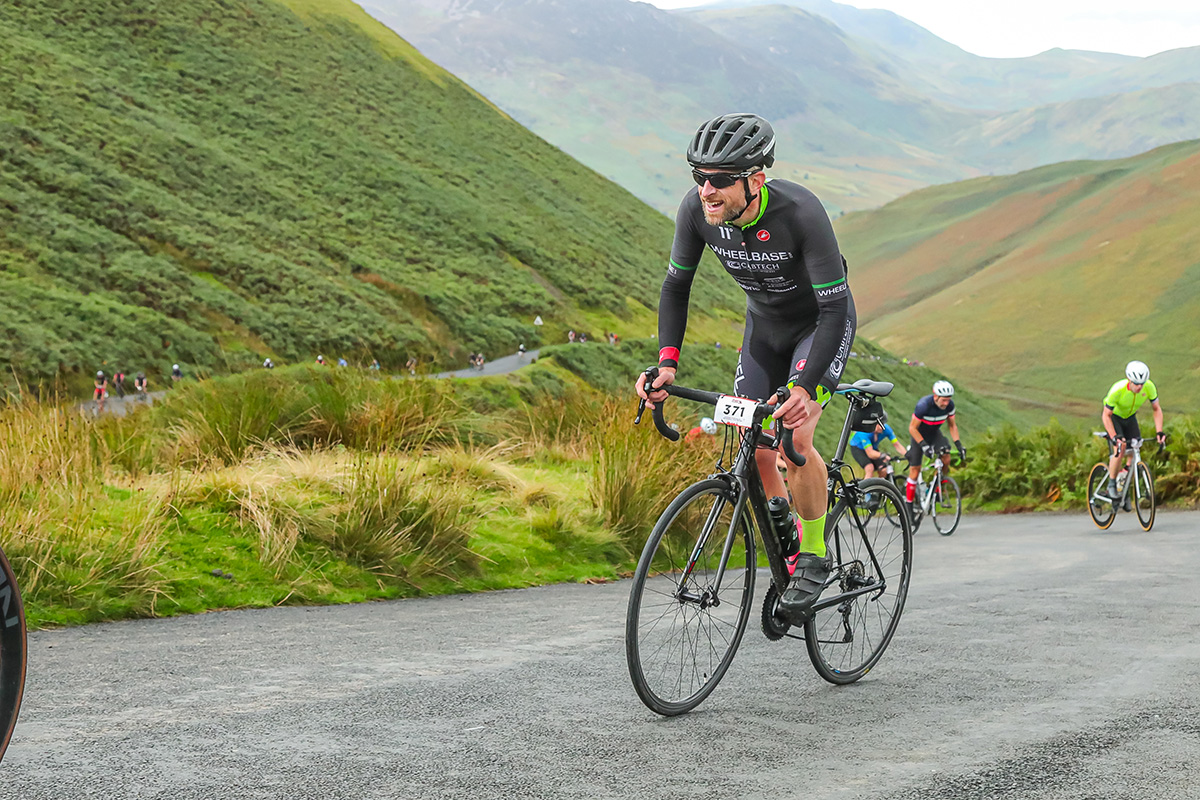
Wheelbase Digital Marketing man Johnny Dodgin on Newlands Pass; is that a smile or a grimace?!
As well as supporting the Fred Whitton event, Wheelbase sent a small number of staff to take on the challenge this year…

Fast lad Sam, one of our Wheelbase workshop technicians (who also races for our team) set one of the fastest times of the day.
Congratulations to the Wheelbase lads who completed the 112 mile Fred Whitton Challenge in the following times:

Wheelbase part time sales assistant Luke excels on any bike, road or mountain. At the Whitton he danced up the climbs and finished in 13th place.
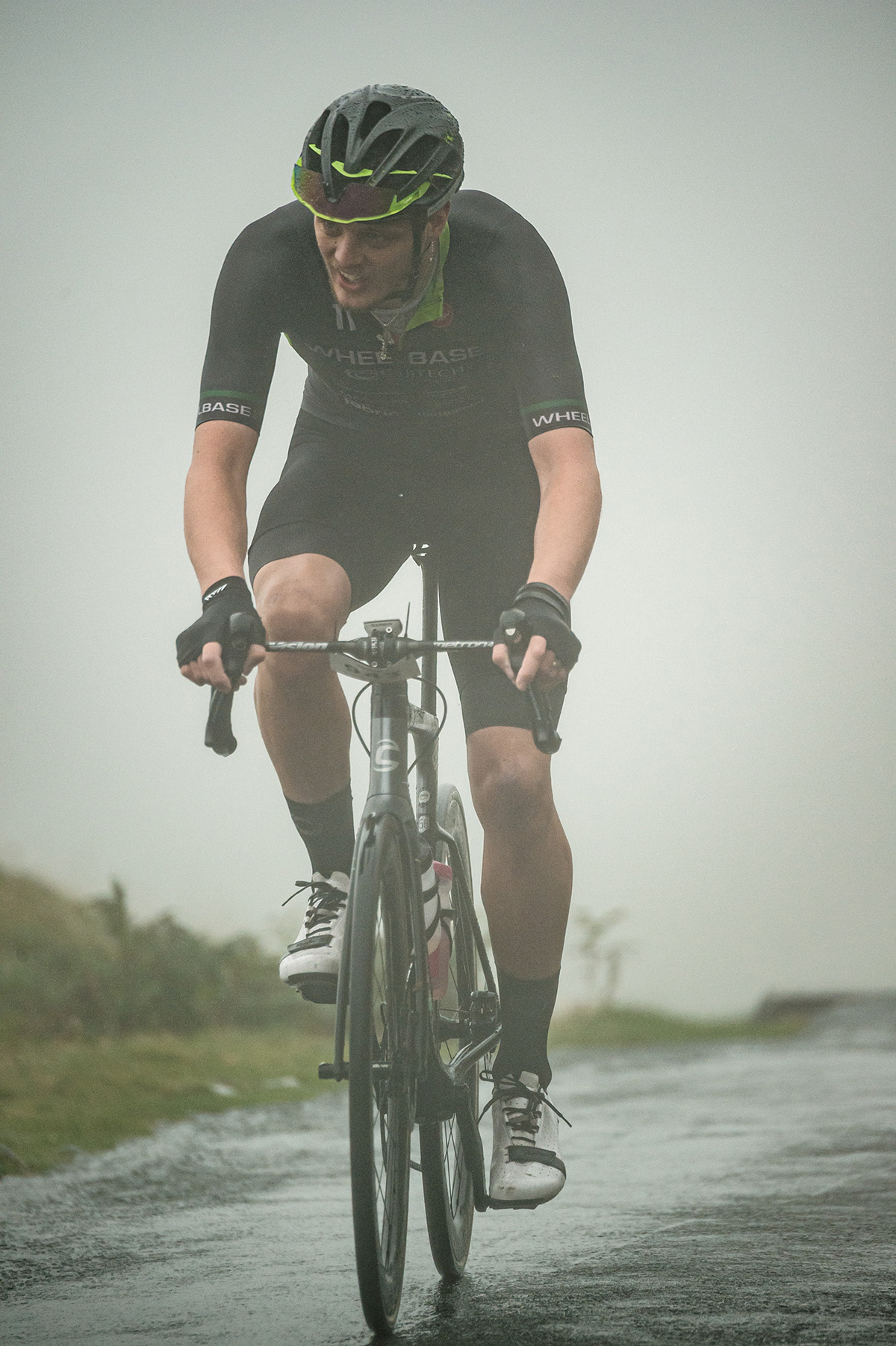
Sam emerges from the mist at the top of Hardknott Pass; he would go on to finish the Fred Whitton Challenge in a brilliant 5th place.
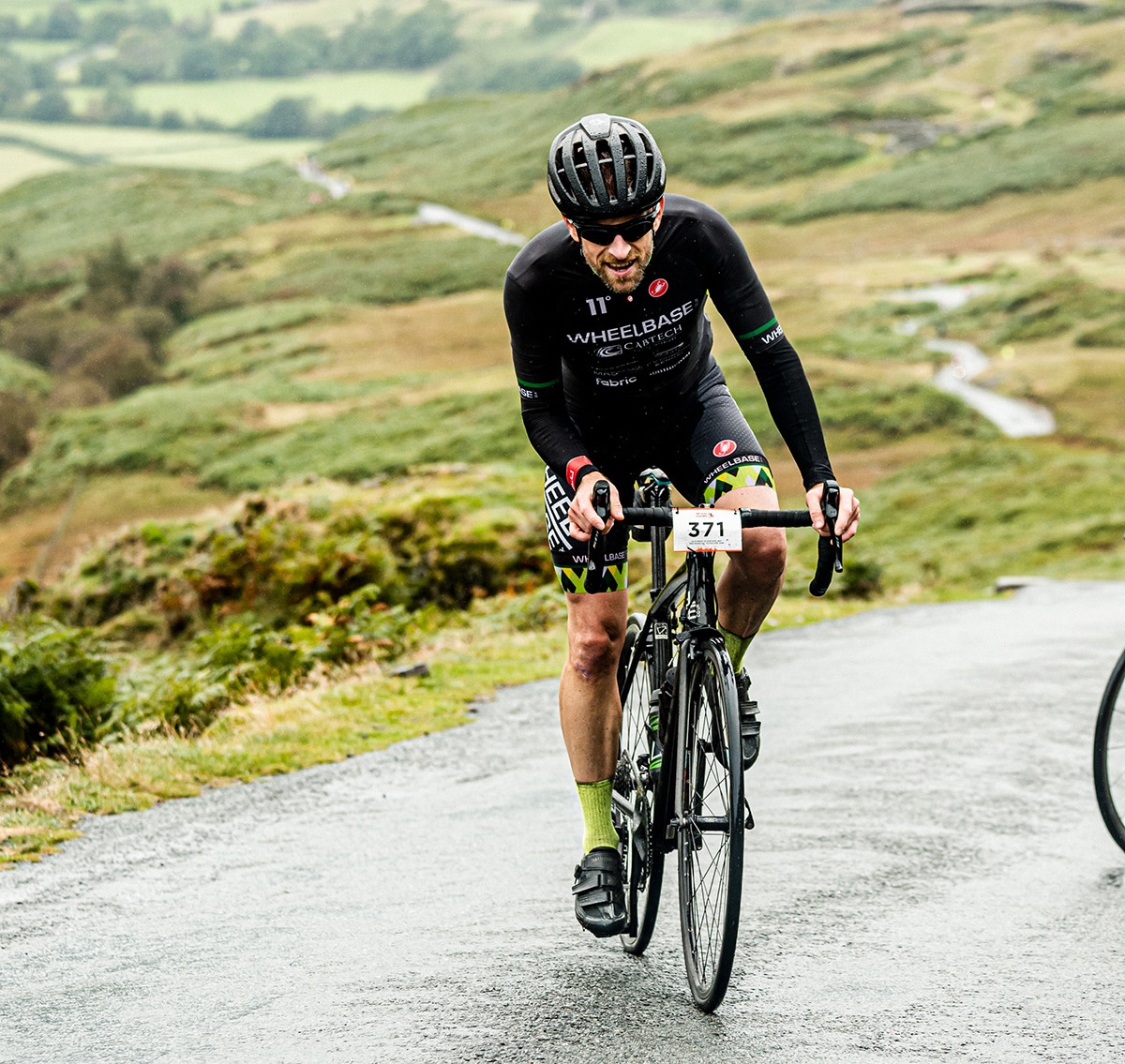
The relief is palpable as Johnny approaches the high point of Hardknott Pass.
Wheelbase lad’s chosen bikes for the Fred Whitton:
Congratulations to all of the competitors who took part in the Fred Whitton Challenge this year; big thanks to the event organisers for such a well-run event and a MASSIVE thanks to all of those who took the time to support the riders from the side of the road. Wheelbase look forward to supporting this event again next year which raises a considerable amount of money for charities including Macmillan Cancer support, Great North Air Ambulance, North West Air Ambulance and The Duddon and Furness Mountain Rescue Team.
Written by Johnny Dodgin
Photos by Steve Fleming
Have you seen our weekly Fast Bike Friday feature? You can see bikes like the Pinarello Dogma and more every Friday. Missed some of our best bikes? You can now see all of our featured bikes in one place over on Pinterest where you’ll find links to each of our Fast Bike Friday Blogs too!
Click the link below and search our archive…
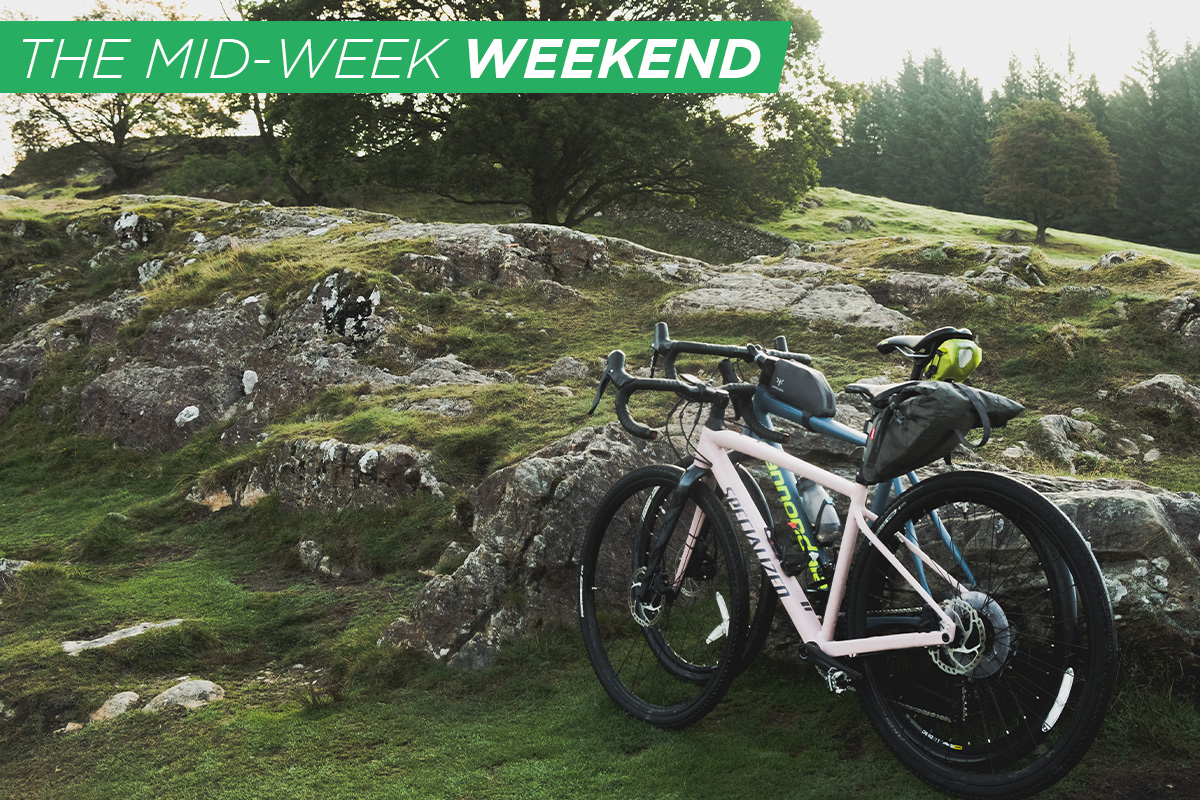
Top Wheelbase Lake District staffer Andrew Barlow has perfected the art of the ‘mid-week weekend’, our very own talented time-pushed landscape photographer loves to get out on the bike as much as possible and never misses an opportunity to capture stunning images of his rides and the amazing Lake District landscapes that he gets to ride in. A job in retail typically means working at the weekends, especially here in the Lake District when we are super-busy; an early Autumn ‘mid-week weekend’ strikes that work/play balance…
Making the most of the time that we have now were heading towards autumn, as the nights draw in and the weather becomes nothing but rain for prolonged periods of time. A mid-week camp is what keeps my creative spark and also my mental health in check. There is something within these simple primitive actions such as cooking over a stove and sleeping in a basic shelter helps ease my mind, resetting from the rat race that we all find ourselves in.

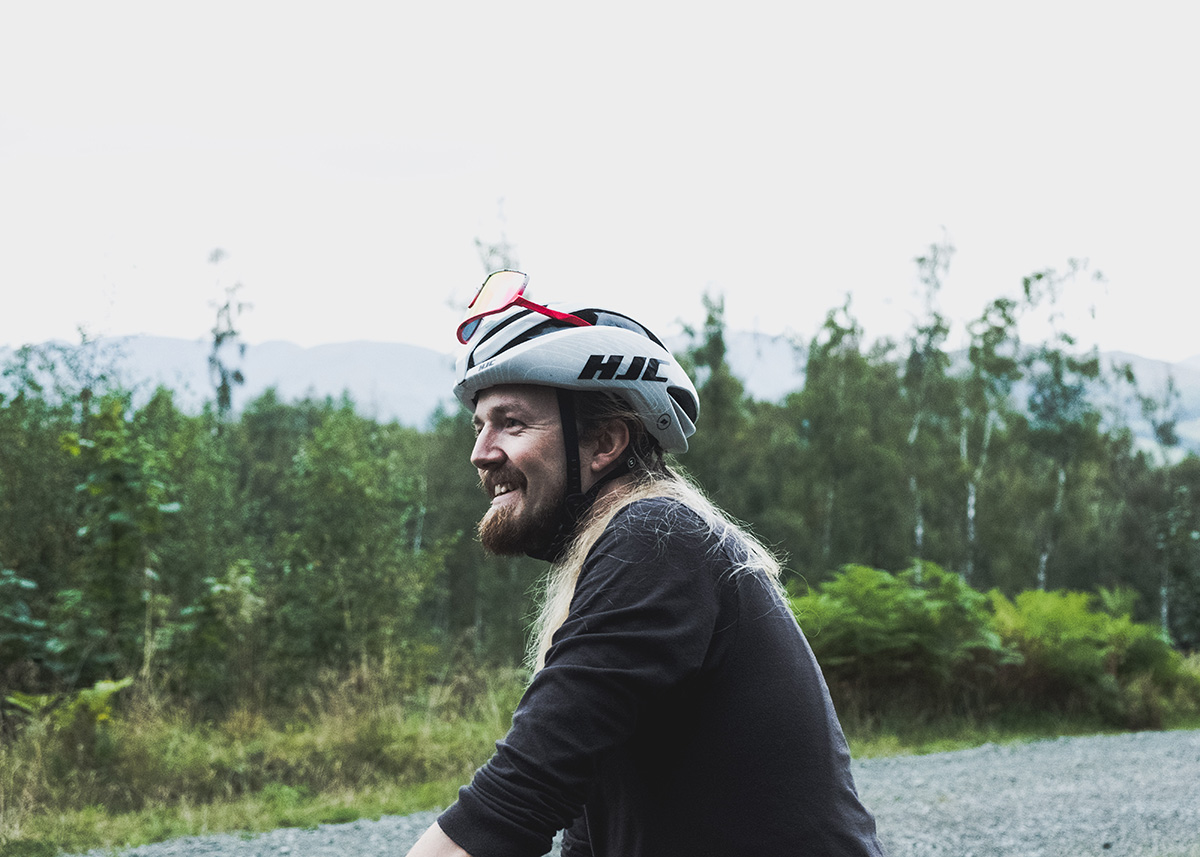
Myself and a few others embarked on a mid week micro adventure, starting from Wray castle on the north western shores of Windermere and heading up and over to Moss Eccles Tarn for a post work wild camp. Beatrix Potter owned this tarn and was inspiration for her writing, it was donated to the National Trust after her death in 1943.
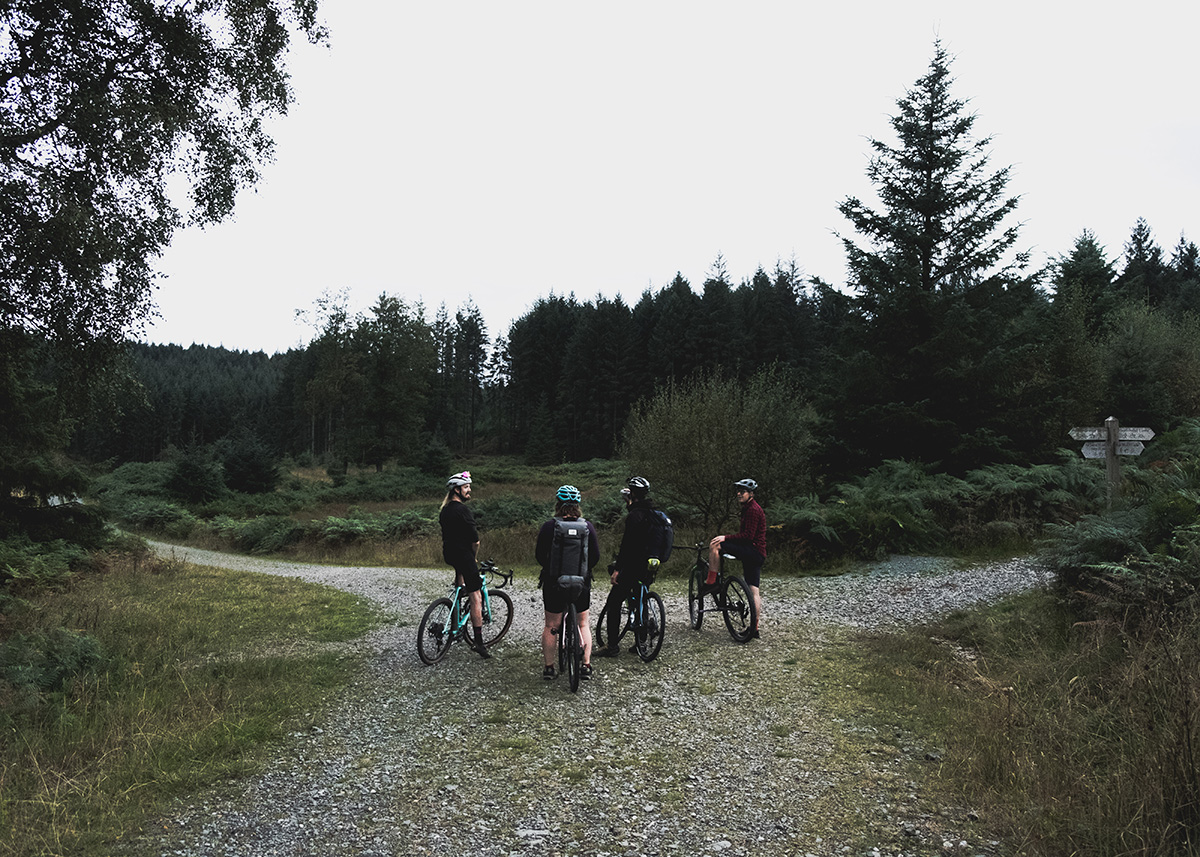
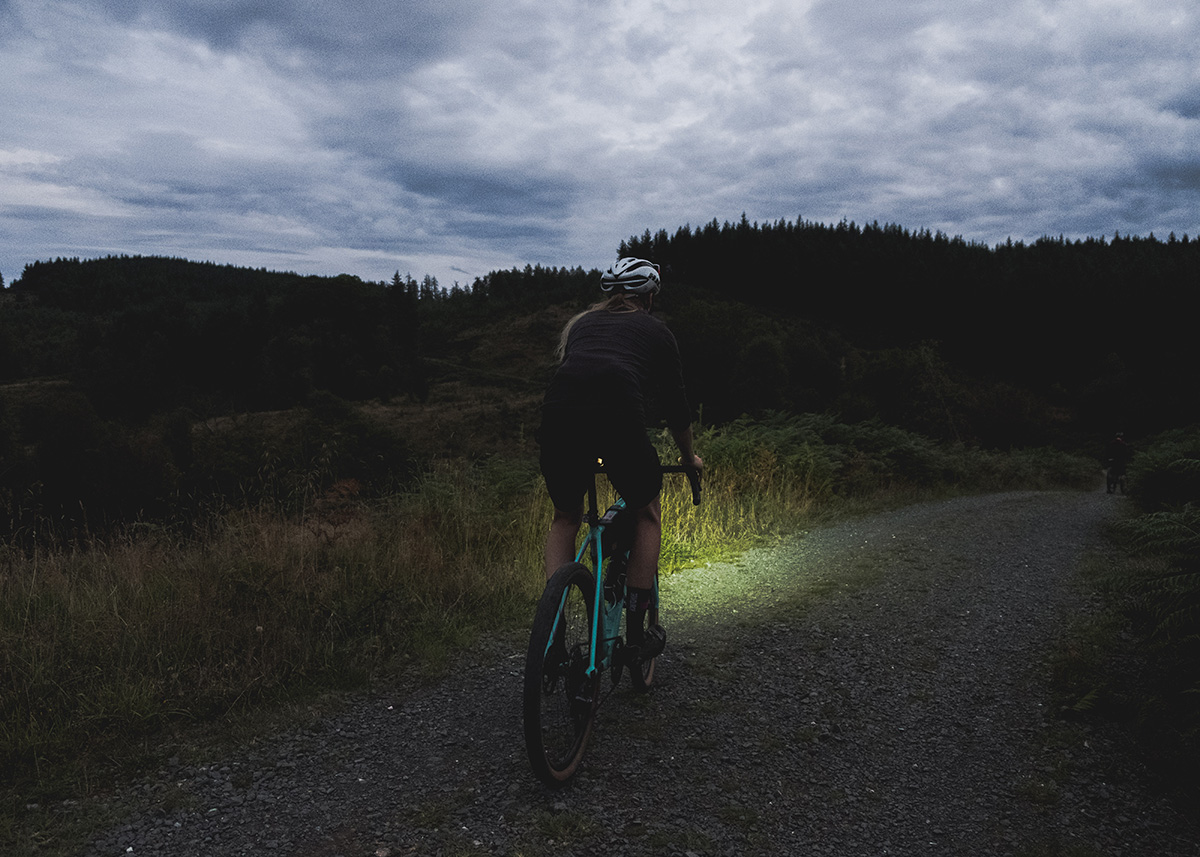
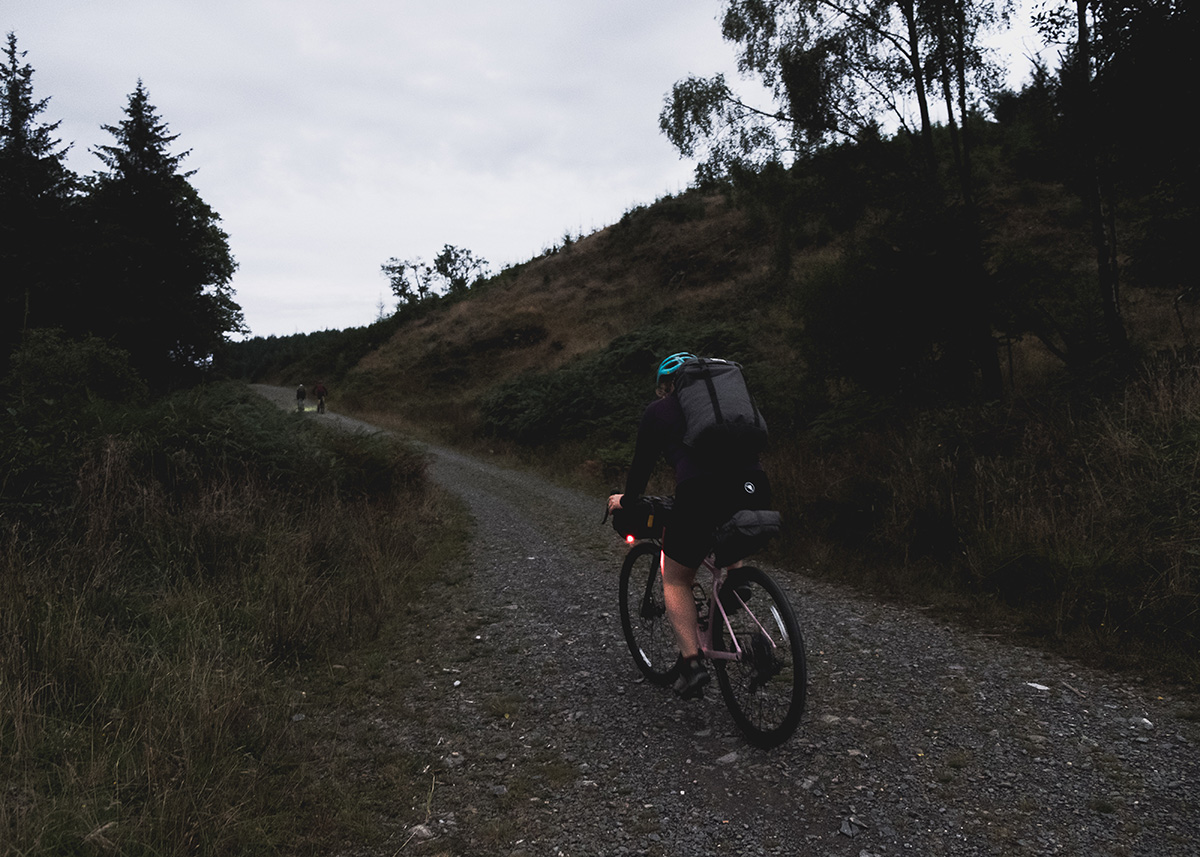
Climbing up from Low Wray into Claife saw us riding on some of the Lake Districts best gravel, flowing up through Long Heights with views down to Windermere. This ride then turns into a flowing descent down to Moss Eccles tarn, after making our way out of the obtuse woodland. Doing this in blue hour was quite some fun, questionable lines under the forever fading daylight, we soon made it to our home for the evening.
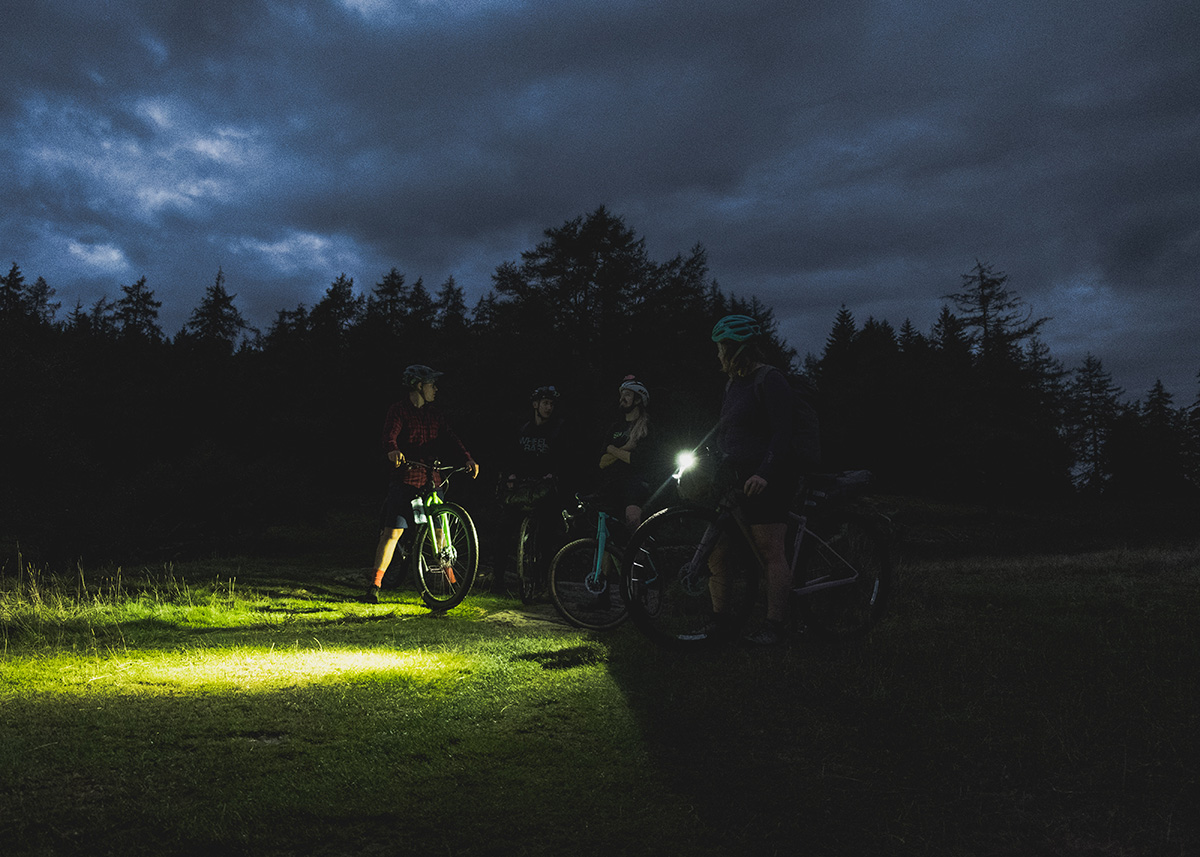
Setting up camp is one of my favourite parts of a micro adventure, or any adventure for that matter especially when arriving in the dark. We chatted up until late evening, exchanging stories from our childhoods whilst watching the clouds fleet across the rising moon, silhouetting the capacious sycamore trees in the distance, after saying our goodnights it was time hit the hay, the comforting sounds of tents zipping shut and rustle of sleeping bags as one another attempts to get comfy, I’m lucky in this instance and promptly find comfort in my temporary accommodation and tend to sleep rather well.
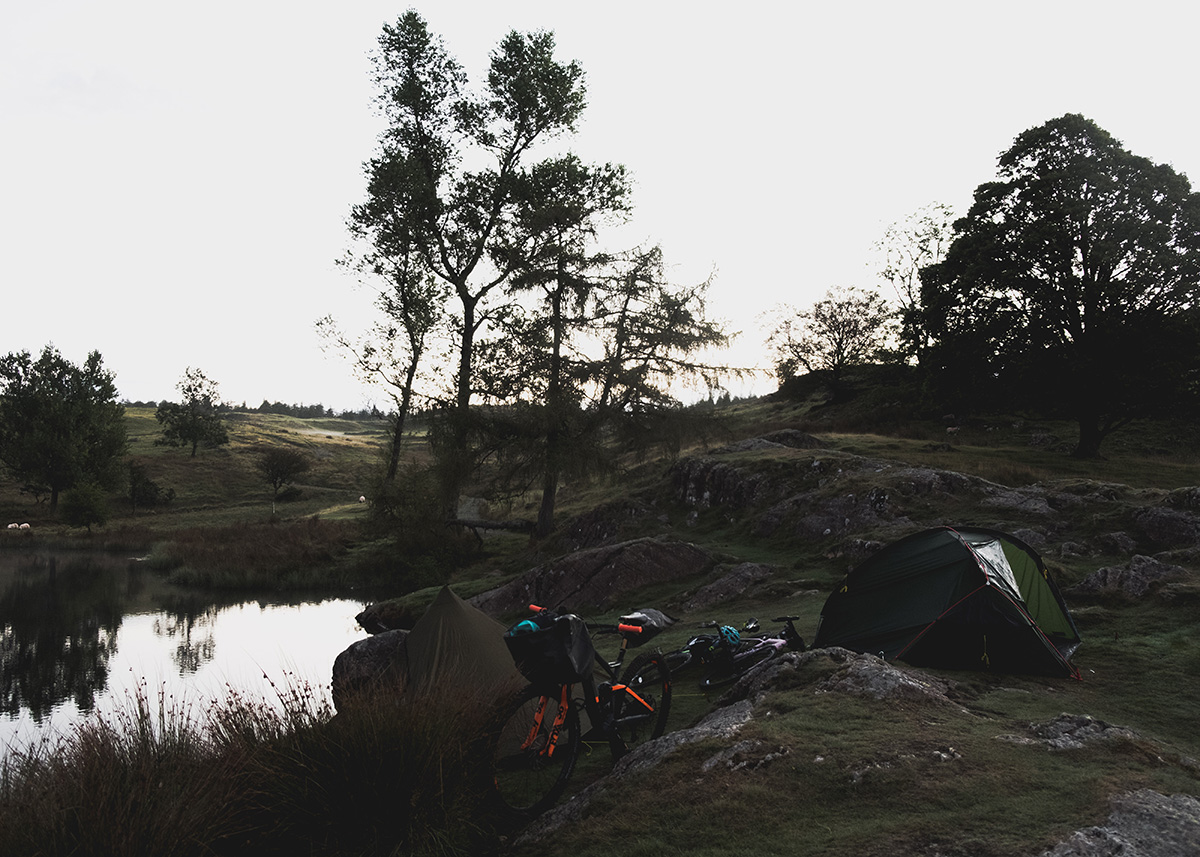
Being awoken by the alleviating sound of bird song, sheep bleating and cattle mooing in the distance reminds me why i find so much peace within bike packing and wild camping. Sitting and watching the local habitants and the day come to life with a brew in hand, its the simple things in life I seek so much comfort from.
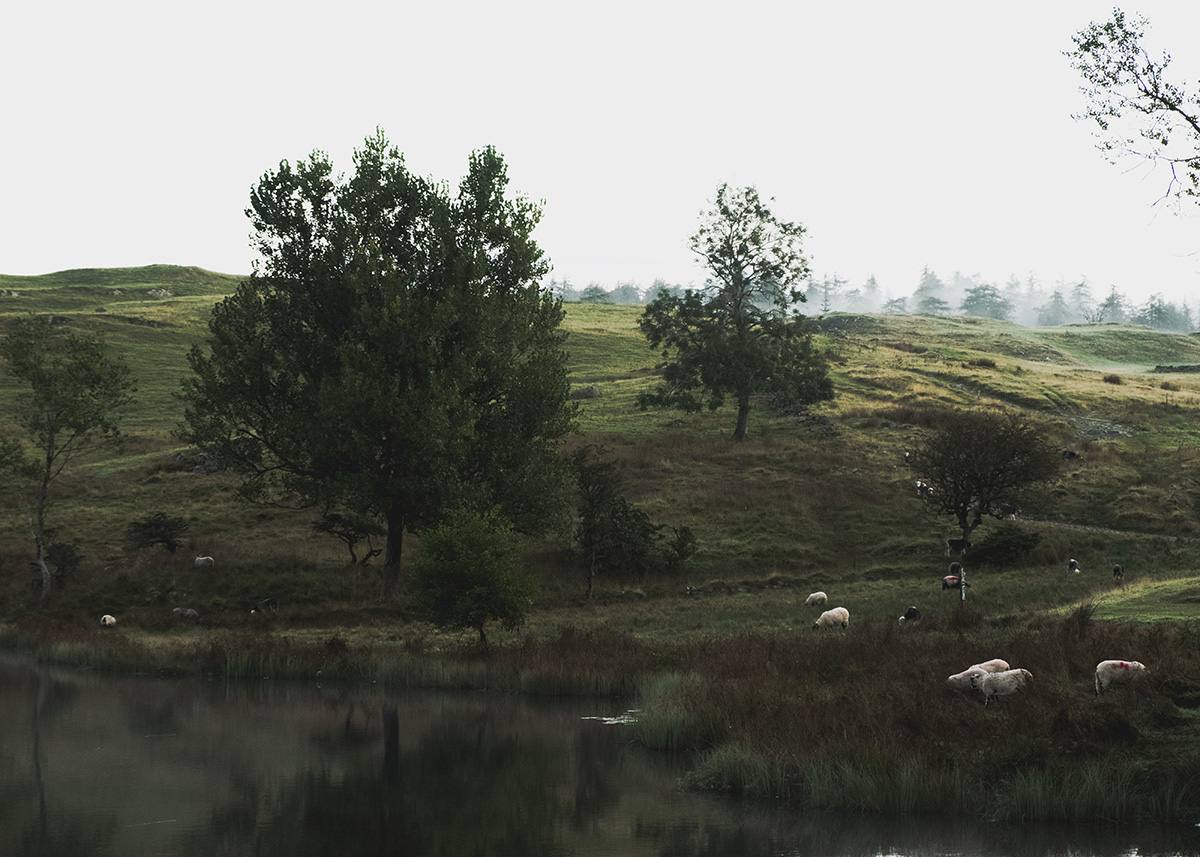

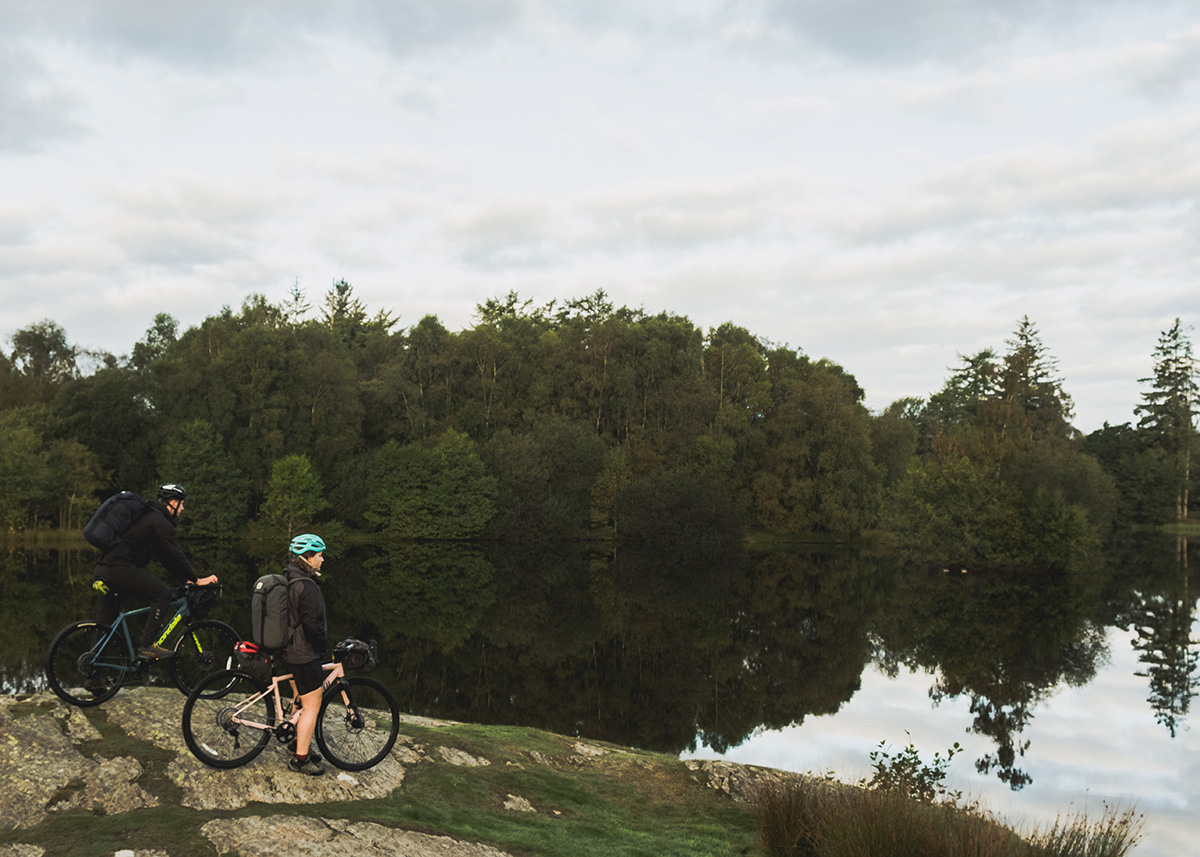

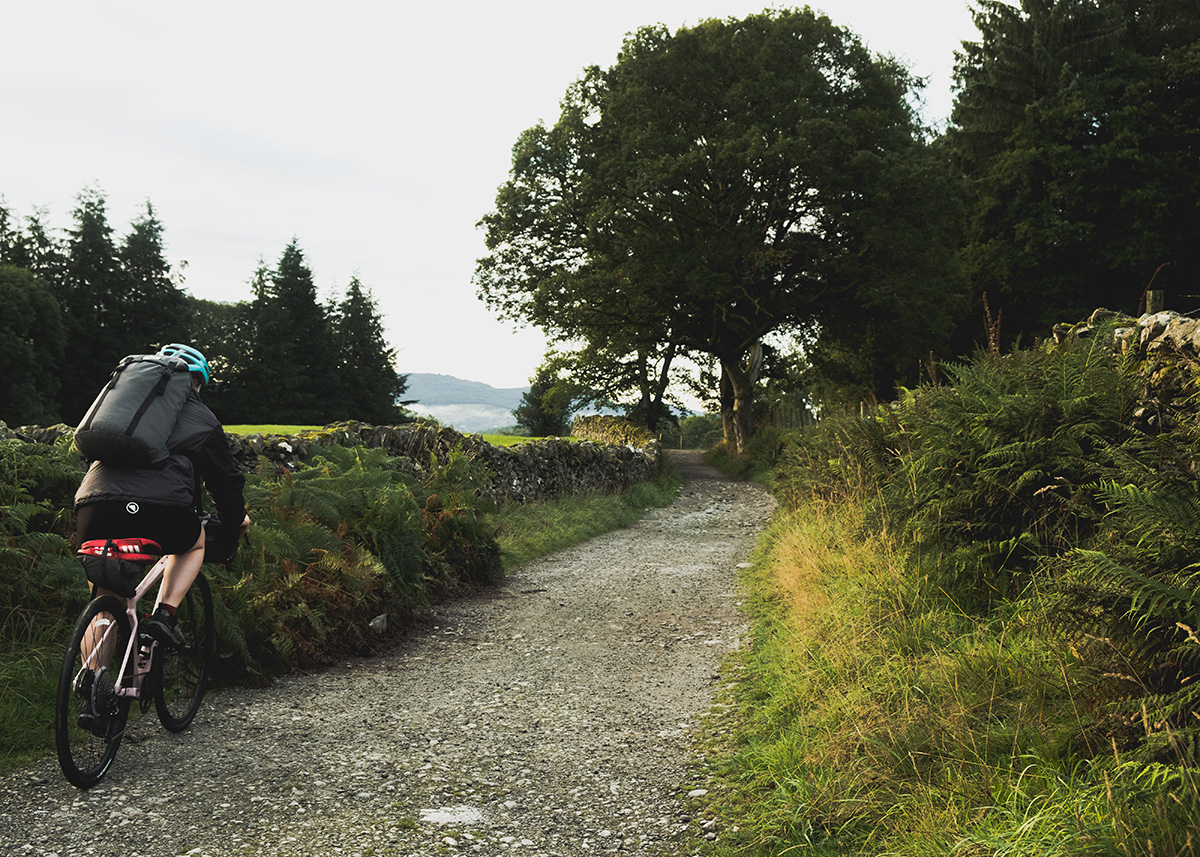
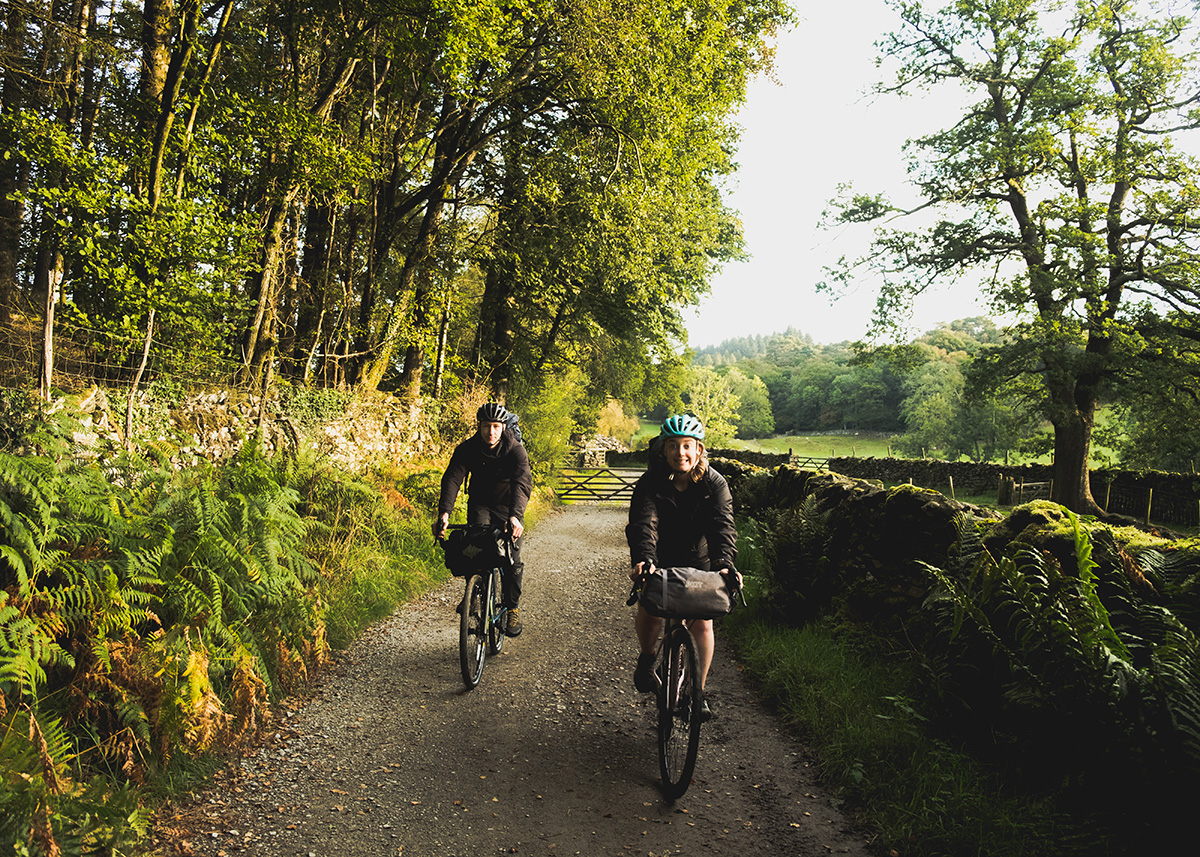
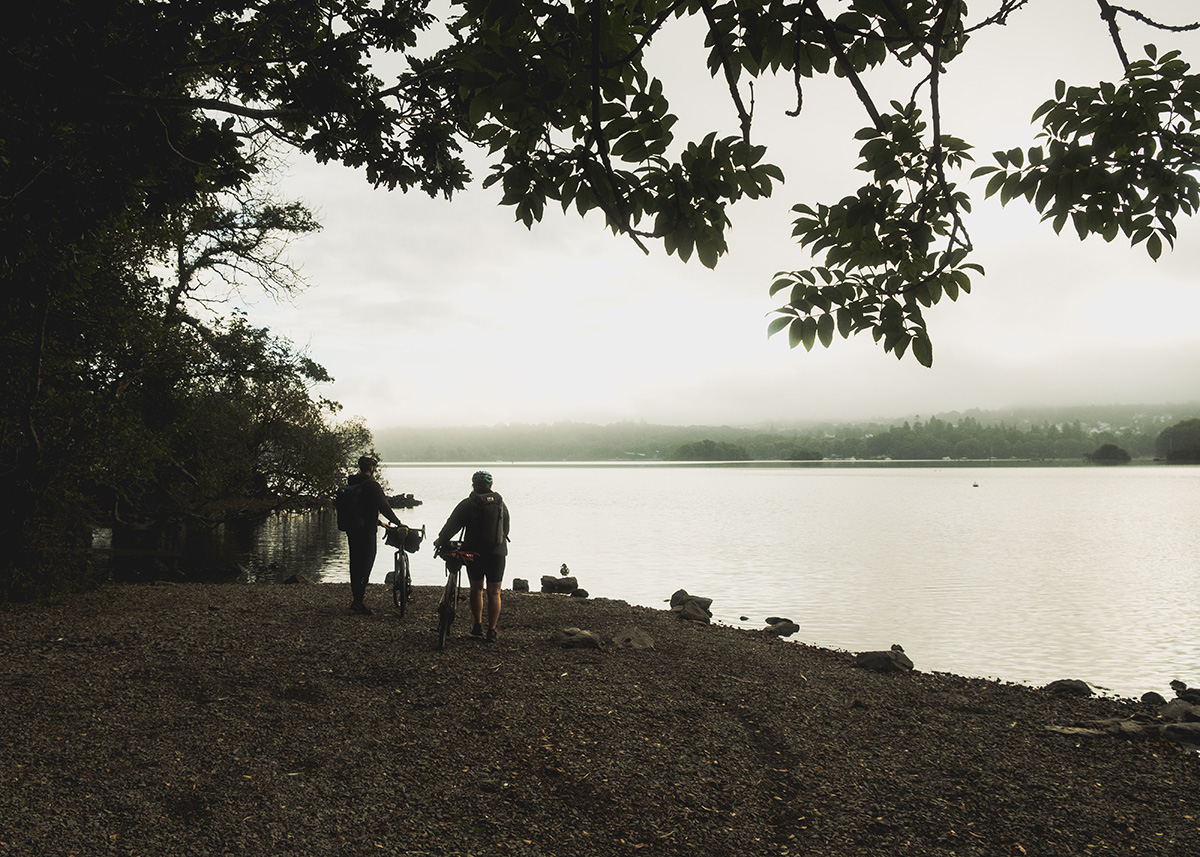


After striking camp and making certain we had “left no trace” it was time to head down to the shores of Windermere to watch the morning unfold as we rode along through the forest that sits right by its side, transient clouds on the fell tops catch my attention as I’m riding the shoreline, having to stop for. Moments at a time to capture this beauty before my eyes, a truly special morning in the English Lake District.
Written by Andrew Barlow
Photos by Andrew Barlow
Have you seen our weekly Fast Bike Friday feature? You can see new fast bikes every Friday. Missed some of our best bikes? You can now see all of our featured bikes in one place over on Pinterest where you’ll find links to each of our Fast Bike Friday Blogs too!
Click the link below and search our archive…

This week for our Fast Bike Friday feature we’re celebrating the launch of Scott bikes at Wheelbase! Yes, if you haven’t already heard we are now proud stockists of cutting-edge Swiss bike brand Scott, available to buy at our Wheelbase Lake District and Wheelbase Yorkshire stores and of course available to order online, shipping direct to you ready to ride anywhere in the UK. For our very first ‘Fast Bike’ from Scott we’re taking a detailed look at the super-stylish, innovative Scott Spark RC Team Issue AXS full-suspension cross-country mountain bike with its unique internal rear shock and progressive geometry; a bike that has already garnered a considerable amount of attention from the cycling industry press and wider mountain bike community thanks to that original suspension configuration.
Scott UK have a whole fleet of the all-new 2022 Spark RC Team Issue AXS bikes available for staff training with their retailers and upcoming demo events with the public around the UK. Josh, Scott’s Northern Area Sales Manager (and super-fit racer) joined us recently at Wheelbase Lake District on a beautiful, sunny evening to run through the technical aspects of the Spark RC Team Issue AXS bike and to ride with us on some of our best local trails so that we could all get a real feel for this new bike. Needless to say I was particularly excited to ride this full-suspension cross-country mountain bike after all of the recent industry chat around it…

There’s been a lot of industry chat about the Scott Spark RC, with its unique internal shock configuration so I was excited to get a ride on one myself.
As some of you may already know, the Scott Spark has been around for a number of years and has slowly evolved over that time to become more and more capable when it comes to handling the demands of modern cross country racing. It’s worth pointing out just how technical cross country courses have become in the past few years, with sections becoming more and more difficult to ride cleanly without crashing out. If you need more convincing watch the replay of the recent Tokyo Olympics Mountain Bike Race, it was possibly the most technically-demanding course that racers have ever encountered, with elements of the course influencing the final outcome of the race. Riders now spend as much of their training time focused on their technical riding skills as they do on their fitness; staying in sync with this evolution the best bike brands are also pushing the boundaries when it comes to their bikes ability to handle this more aggressive form of riding, the all-new Scott Spark is a great example of this evolution.
When it comes to real-world testing and product development Scott have the perfect setup with the Scott-Sram MTB Racing team pushing the limits of their bikes at the highest level of international racing. Multiple World Champion, World Cup winner and Olympic Champion Nino Schurter has been onboard Scott bikes for almost the entirety of his racing career and has made a significant contribution to the evolution of the Scott Spark over the years; known for his remarkable bike-handling skills a rider like Nino was bound to push the boundaries of what a full-suspension cross-country mountain bike could do and the all-new Scott Spark with its internal shock is the culmination of that long-term relationship. The Spark is now faster than ever before both up AND downhill with increased suspension travel and more progressive geometry.
At the heart of the new Spark RC Team Issue AXS is Scott’s patented integrated suspension system and its the internal shock configuration that has got everyone talking. As well as looking super-clean this integrated shock platform has allowed Scott to refine the bike’s suspension characteristics without sacrificing weight; the placement of the internal shock and the position/increased size of the bearings help eliminate unwanted lateral movement as the shock goes through its compression making the bike stiffer and more responsive when you stomp down on the pedals. This integrated suspension technology also helped Scott to engineer frames with considerably lower shock placement to help lower the center of gravity for a bike that feels more stable at speed and handles better in all riding scenarios.
With some very clever Swiss engineering Scott have integrated the rear shock inside the carbon frame while improving on suspension efficiency.
Another benefit of this new fully-integrated rear suspension platform is the increase in protection from the elements for the rear shock and all of its moving parts. This benefit can’t be understated here in the UK where riding conditions are typically wet and muddy almost all year round; the longevity of the shock’s seals and the suspension platform’s internally-located bearings is greatly improved with this setup.

The location of the internal RockShox rear shock is low down in the frame for a stable centre of gravity and is completely protected from the elements.
Previous incarnations of the Scott Spark have featured a single-pivot suspension layout and the all-new Scott Spark continues with this efficient configuration. This super-light carbon fibre frame features a simple but very effective flex pivot in the seat stay and is a neat design solution that enables just the right amount of rear wheel travel without adding unwanted weight through some very sophisticated carbon layup designed to continuously flex.
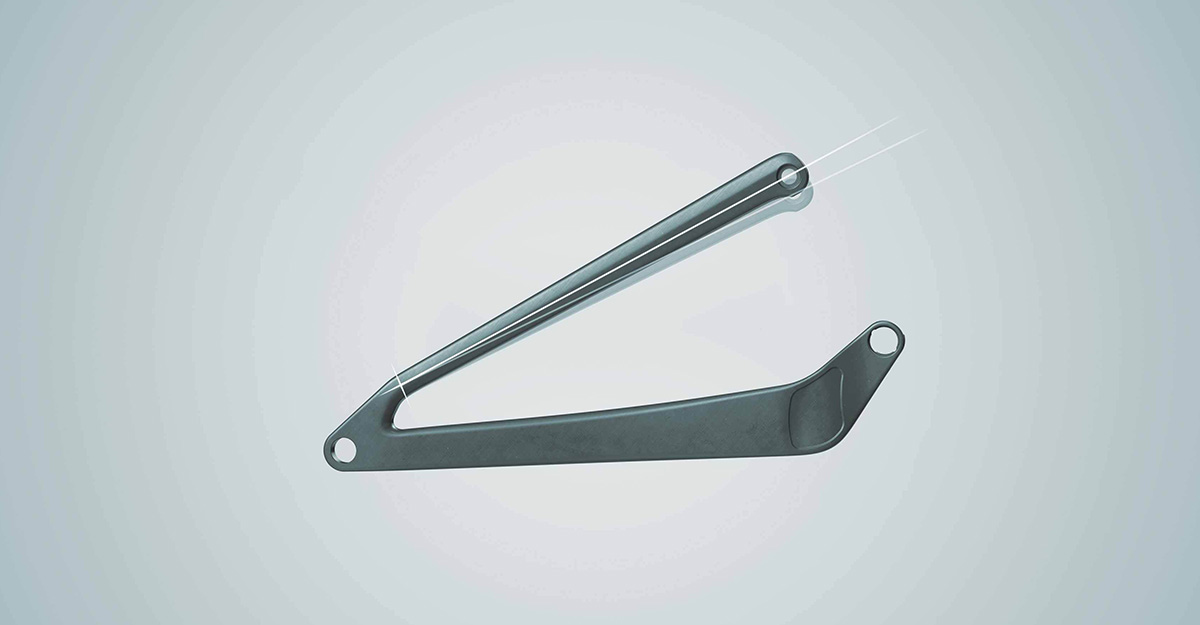
The Spark RC features a single pivot suspension configuration which relies on a flex pivot in the seat stay.
The Scott brand is well-known for its Swiss precision engineering and innovative design solutions; when it comes to the construction of the Spark’s chassis Scott have approached it with the mindset that the frame should be considered as two significant areas, with the lower half being the stiffer load-bearing portion of the frame designed to be laterally stiff under pedaling input and able to accommodate the forces generated by the internal suspension platform. In contrast the upper portion of the frame features a more forgiving, lighter carbon fibre layup to help keep the Spark as light as possible while providing a little compliance to help keep you feeling fresher for longer.

The structure of the Spark RC chassis can be considered as two separate structures with the lower portion being the stiffer stress-bearing section.
So what about access to that illusive internal rear shock? Well, it couldn’t be any easier. Scott have included a simple hatch that is easy to remove and refit by hand with no need for any tools and when the hatch is fitted it forms a secure seal from the elements. Once you’ve removed the hatch you’ll be able to adjust rebound, compression and shock pressure; you can also access the cable that activates Scott’s TwinLoc Suspension System (more on that later).
On the underside of the downtube there’s an easy-to-remove panel that reveals the internal shock.
Adjustments to the rear shock’s air pressure can be made quickly and easily via the access cavity in the downtube.
Setting the sag to suit your weight is important for getting the most out of your suspension, this indicator makes things easier.
If the outer sag indicator isn’t enough for you then the frame’s small rubber bung can removed quickly to allow you to check the shock itself.
For the past twenty or so years conventional full-suspension cross country mountain bikes have featured 100mm of front and rear suspension travel. More recently we’ve seen bikes with 120mm of travel creeping into racing due to the technical demands of modern xc courses; Scott are leading the way here with the Spark rear shock and suspension fork both offering 120mm of plush travel.
Stowed away inside that sleek-looking carbon frame is a RockShox NUDE 5 RL3 Trunnion rear shock; this is a Scott custom model with travel / geometry adjustment and 3 different modes – Lockout, Traction Control and Descend – moving between total lockout, 80mm of travel and 120mm of travel. To complement the internal rear shock Scott have spec’d a RockShox SID Select RL3 Air Custom Charger fork with a 3-mode damper and a remote lockout. With their rich racing heritage and focus on being as fast and efficient uphill as they are downhill Scott’s full-suspension mountain bikes have featured their innovative Twinloc setup for many years, the all-new Spark is no different and it brings some real benefits to how the bike performs over mixed terrain.
Scott have matched that plush rear suspension with a lightweight RockShox SID Select RL3 fork providing 120mm of travel.
The Scott Twinloc system is designed to allow you to control the frame, fork and shock as one complete system; I could really feel the benefit of this on our Lake District ride where the terrain varied from long, smooth gravel sections to technical rocky climbs and very loose, steep, rocky descents taken at high speeds. Playing around with the Twinloc I was able to move from fully-locked out on the road and gravel climbs to 80mm of travel on technical rocky climbs where that extra traction but minimal suspension travel was required, to fully-open with 120mm of travel for the high-speed rocky descents. This really was as close as I’ve come to a mountain bike that can do it all – climbing like a super-light hardtail race bike and flying downhill like a capable modern trail bike; it was efficient and confidence-inspiring in equal measure.
So without getting overly technical how does the Twinloc work? Well, a bike with 120mm of suspension travel, correctly set up has more sag than a bike with 80mm of travel. It’s that extra travel that transforms this bike from an efficient cross-country racing machine into a capable trail-focused bike but that greater amount of sag for 120mm will have an adverse effect on the Spark’s geometry and climbing performance. Twinloc cleverly manages the sag effect so that this isn’t an issue and it doesn’t just increase low-speed compression to help gain pedaling efficiency, it also changes the spring curve to dynamically change the geometry of the bike so that it sits higher and maintains a steep seat angle for more effective climbing.
Scott’s brilliant TwinLoc system allows you to toggle between fully-locked-out, 80mm or 120mm of suspension travel.
As I mentioned earlier, the Scott Spark RC Team Issue AXS features the type of modern, progressive geometry which has started to filter its way into cross country mountain bikes; the angles may not impress a full-on trail or Enduro rider but these new, slightly more relaxed angles and longer top tube lengths are a step in the right direction when it comes to a mountain bike that is more stable at speed and can handle steep, technical descents. Scott haven’t stopped there though, realising the importance of being able to fine tune your own bike geometry they have configured the headtube, headset and stem to allow you to change the head angle from 67.3° to a more relaxed 66.1°. This can be done without cutting cables or bleeding brakes, simply disassemble the bar, rotate the two headset cups 180° and reassemble.
The Scott Spark’s headset angle can be adjusted with the minimum of fuss.
The Scott engineers were clearly on a roll with their fully integrated, internal rear shock so didn’t stop there; the spark RC Team Issue AXS also features an integrated stem which neatly routes the rear brake hose and rear shock lockout cable through the stem, headset and into the frame. The cable and hose continue through the frame for a clean, uncluttered look and with SRAM’s wireless GX Eagle AXS groupset too there’s a really satisfying lack of visible cables on this bike. It’s worth pointing out too that the Spark is ready to take a dropper seat post with routing neatly through the frame; so although this particular model of Spark doesn’t include a dropper, fitting one should be pretty quick and easy.

The Scott Spark RC features an integrated stem that routs the rear brake hose and shock lockout cable through the stem, headset and into the frame.
Riding the Scott Spark RC Team Issue AXS was a dream, the suspension platform was super-versatile, being nice and active on the downhills while providing ample traction on the climbs without any unwanted bob; changing between the three suspension settings via the Twinloc became intuitive very quickly allowing me to focus solely on the trail ahead. That user-friendly feel was further enhanced by the SRAM wireless GX Eagle AXS groupset, another brilliant system that takes away a lot of the thought process for when and where exactly to change gear; why do I say this? Because with a wireless, electronic groupset any of the potential for fluffed gear changes under pressure that might be encountered with a mechanical system are all but eliminated.
The Scott Spark RC Team Issue features SRAM’s excellent GX Eagle AXS wireless groupset.
Each gear change from the AXS rocker controller on the right of the handlebars was instantaneous with every gear selection being crisp and precise. Incidentally you can custom tune the controller to best suit you; in fact mid-ride I decided that I’d prefer the two buttons to swap their function so that the larger button shifted up the cassette and the smaller button shifted down the cassette; no problem, my ride-buddy Jack had the App on his smartphone and in less than a minute had changed the configuration, brilliant!
A SRAM GX Eagle AXS 12-speed wireless rocker controller selects each gear instantaneously.
SRAM’s GX Eagle DUB chainset sports a narrow / wide 32T chainring to keep your chain securely located.
That 32T chainring upfront is matched with a wide ratio 10-52T cassette to give you a huge range of gears to overcome any terrain.
When I pointed the Scott Spark RC Team Issue AXS bike downhill on some of the faster, rocky trails that are synonymous with the Lake District I all-but-floated through sections that would normally have me riding on the very edge of control on my own cross-country mountain bike. That extra speed felt great, but sharp changes of direction and the ability to scrub off speed quickly and effectively to negotiate tighter, more technical sections were still required. Thankfully Scott have spec’d the Spark with powerful Shimano XT M8100 disc brakes and nice large rotors to regain control in an instant; there’s a 160mm rotor on the rear and a larger 180mm rotor upfront.
Shimano XT M8100 Disc brakes give you all the braking power required to slow this super-fast bike down.
That Swiss engineering excellence shows itself all over the Spark, from the obvious aspects like the internal rear shock to smaller elements that are no-less well-considered and make a difference to how much you enjoy your time on the bike. In a nod to the potential frustrations of having to carry multiple tools for all of the different bolts and fittings on a modern mountain bike Scott have included a new version of their rear axle tool. The Spark’s axle tool features a T25, T30 and 6 Allen Key all in one, allowing you to adjust all of the Spark’s pivot hardware and nearly everything else there is to adjust on the bike.
There’s no more complaining about not having the right sized tool – this removeable rear axle tool features a T25, T30 and 6mm allen all in one.
With the rear axle tool you can adjust everything on the fly.
Scott have made a big statement with the all-new Spark; with its unique internal shock, increased suspension travel from the usual 100mm to 120mm, more progressive geometry and all the versatility of their Twinloc system they have produced a race-winning cross country bike that excels on the climbs, providing instant acceleration and amazing levels of traction on loose terrain. When you point the bike downhill and flick the lever from 80mm of travel to 120mm of travel the Spark instantly transforms into a capable, confidence-inspiring trail bike; we don’t have to go far from the Wheelbase HQ office here in the Lake District to find really challenging terrain and I’m pleased to say that this bike can handle it well. It’s worth noting that Scott also offer the Spark 900 with 130mm of travel upfront, so if you’re less focused on racing and more focused on big days out in the hills then there’s that option too; in fact there’s a whole stable of Scott Sparks available with multiple specifications to suit you and your riding aspirations. We’re proud to now be Scott stockists and look forward to helping you find the right Spark for you.
With suspension travel set to 80mm the Spark RC climbed brilliantly; then after switching to 120mm for the descents it became a rowdy trail bike!
The Scott Spark RC Team Issue AXS is a fantastically efficient cross-country mountain bike that just happens to ride like a capable trail bike.
Full Specification:
Written by Johnny Dodgin
Photos by James Vincent
Want to see more fast bikes? You can now see all of our featured bikes in one place over on Pinterest where you’ll find links to each of our Fast Bike Friday Blogs too!
Click the link below and search our archive…